“As scientific measurements are recorded, visualized, and transformed into graphs, predictive models emerge as useful fictions. Such systematic and rational approaches convince us that the world is efficiently understood, everything is measured, categorized, and controlled — data points and error bars on graph paper. Yet, the edges of the graph paper remind us that science, though precise, is shaped by cultural and social contexts.
Through a variety of approaches, the artists included in the exhibition explore what lies beyond the measurable, confront assumptions and histories of scientific pursuits, and construct facts and poetic narratives that might be able to escape a worldview increasingly confined by technology, standardized procedures, and quantifiable metrics.”
– excerpt from text by Flaviu Rogojan
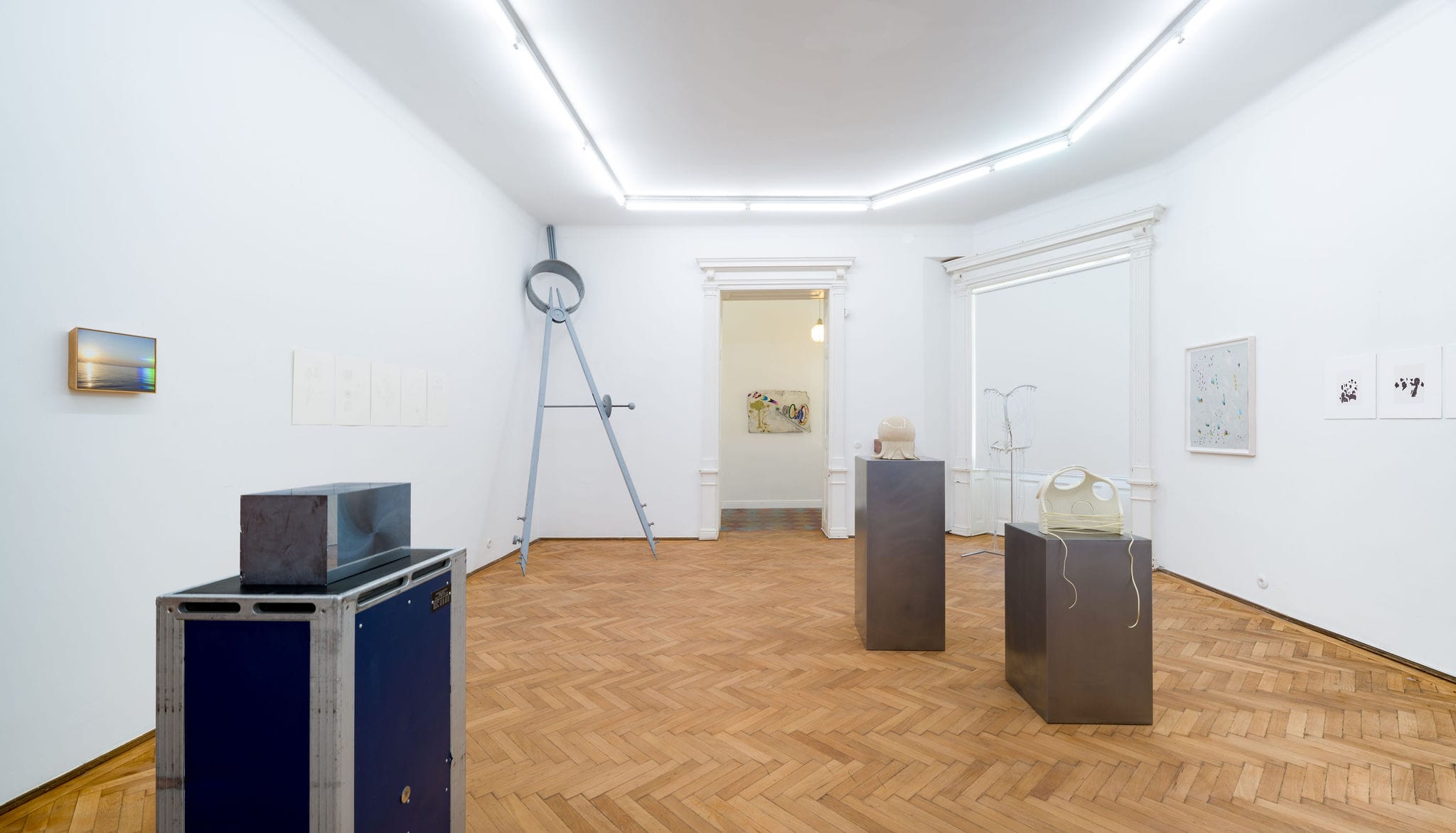
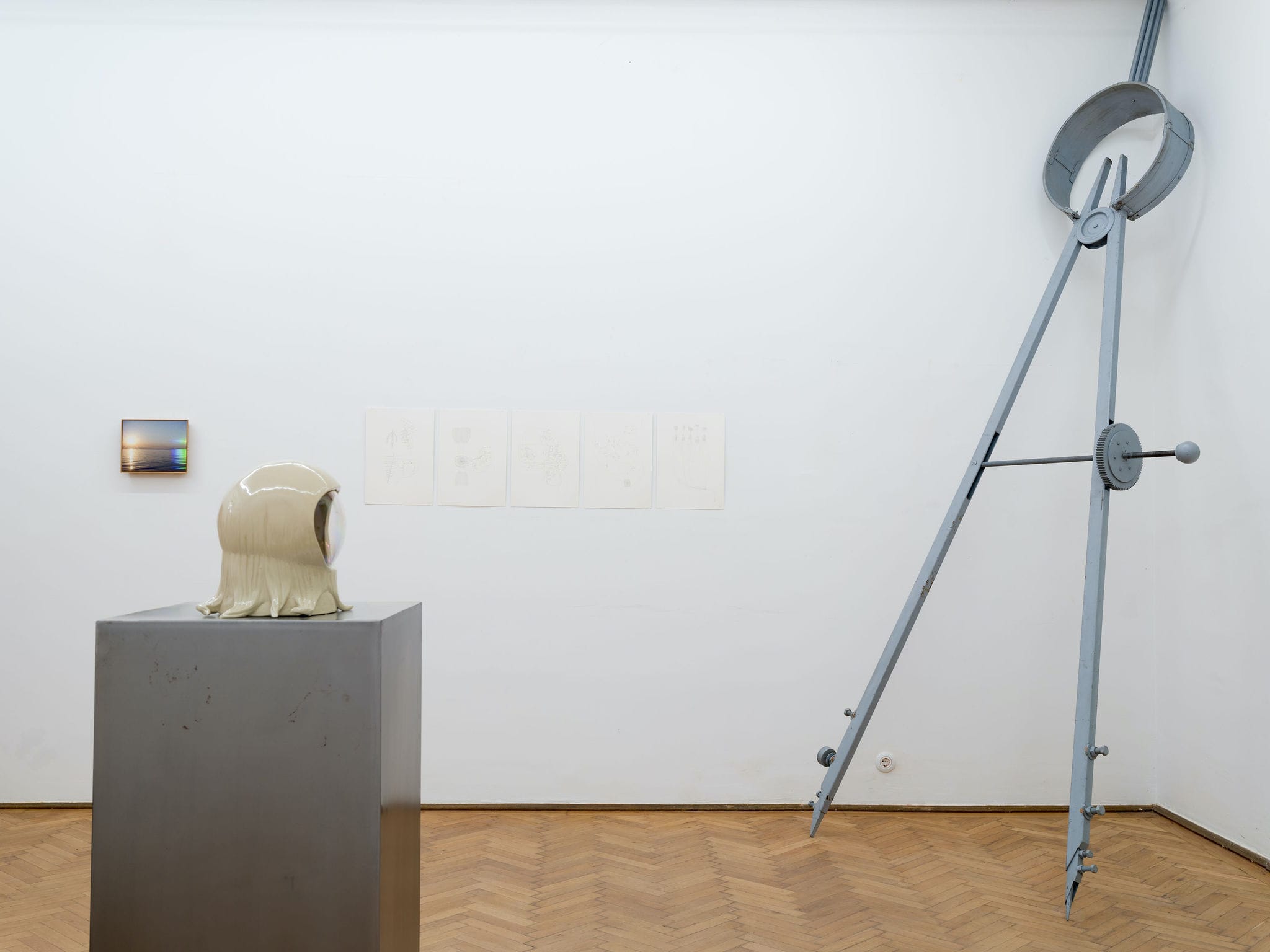
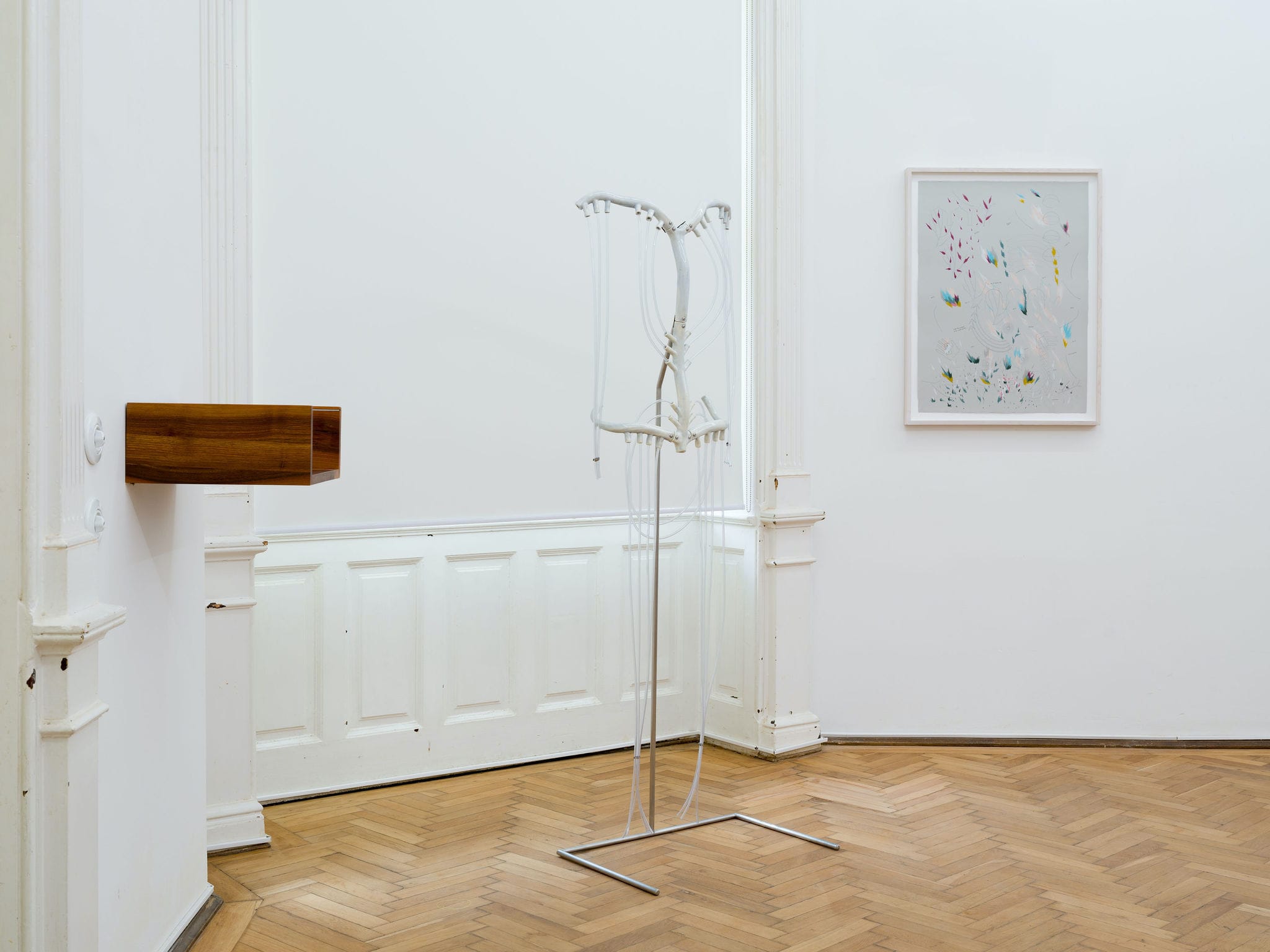
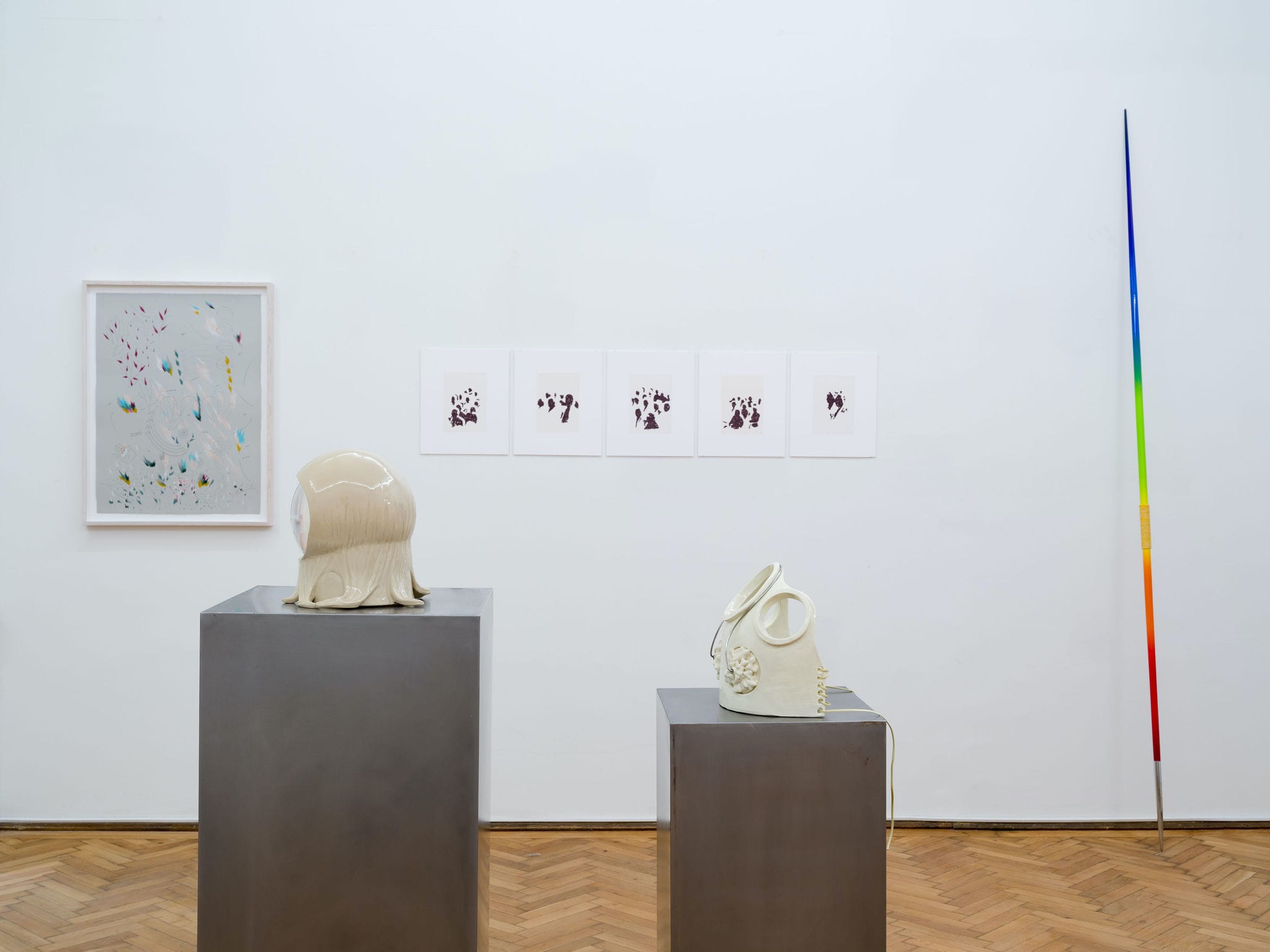
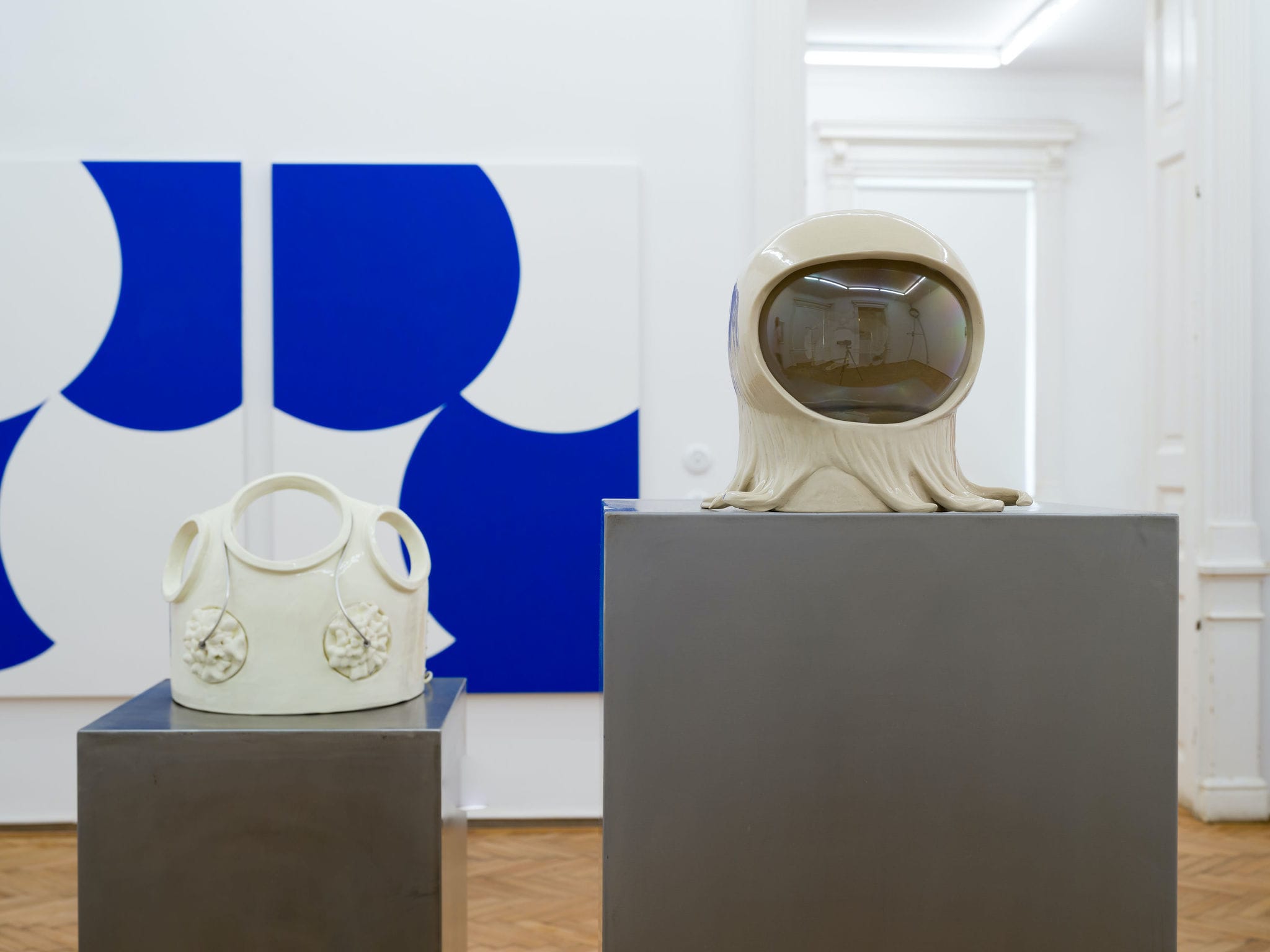
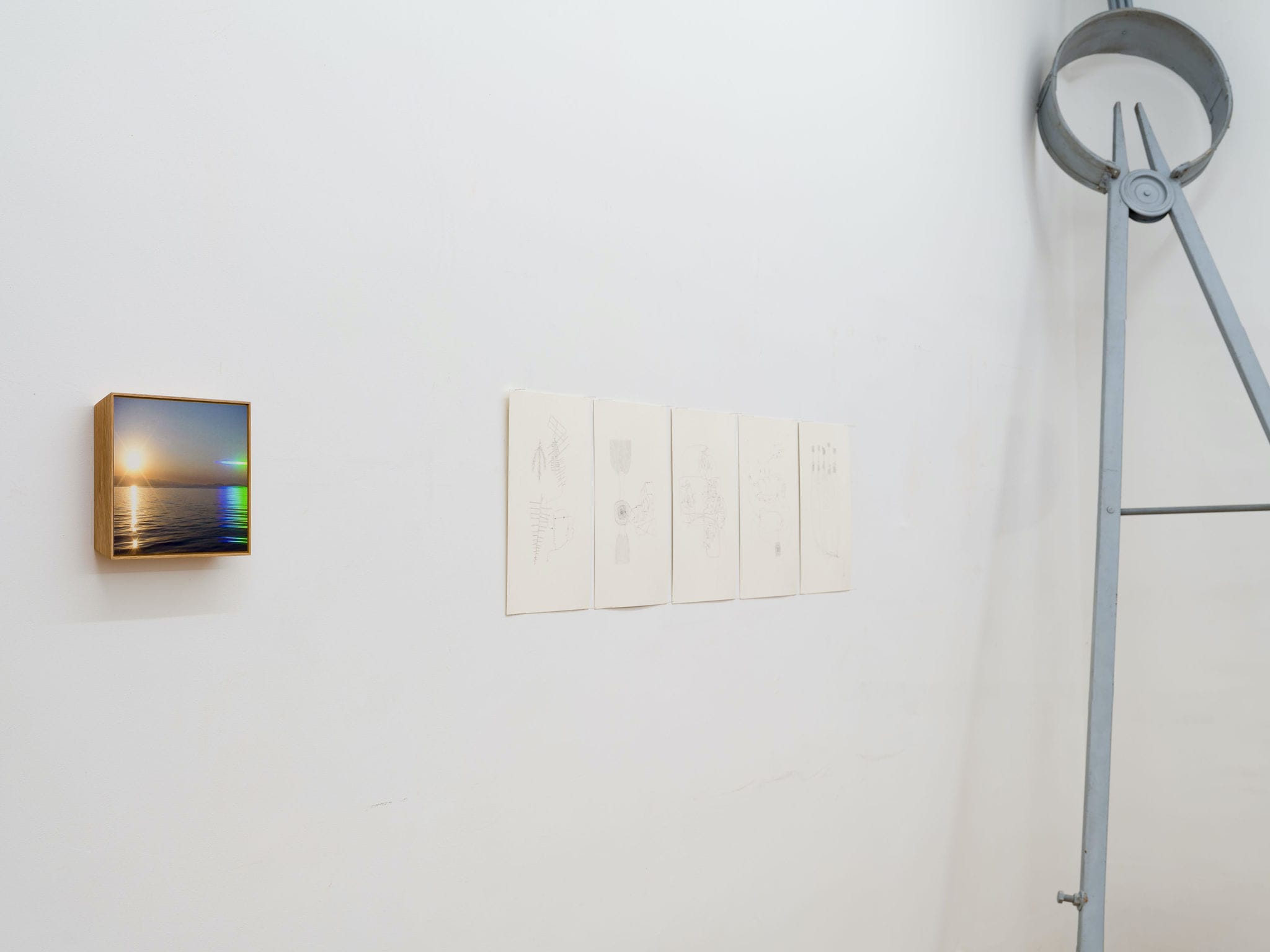
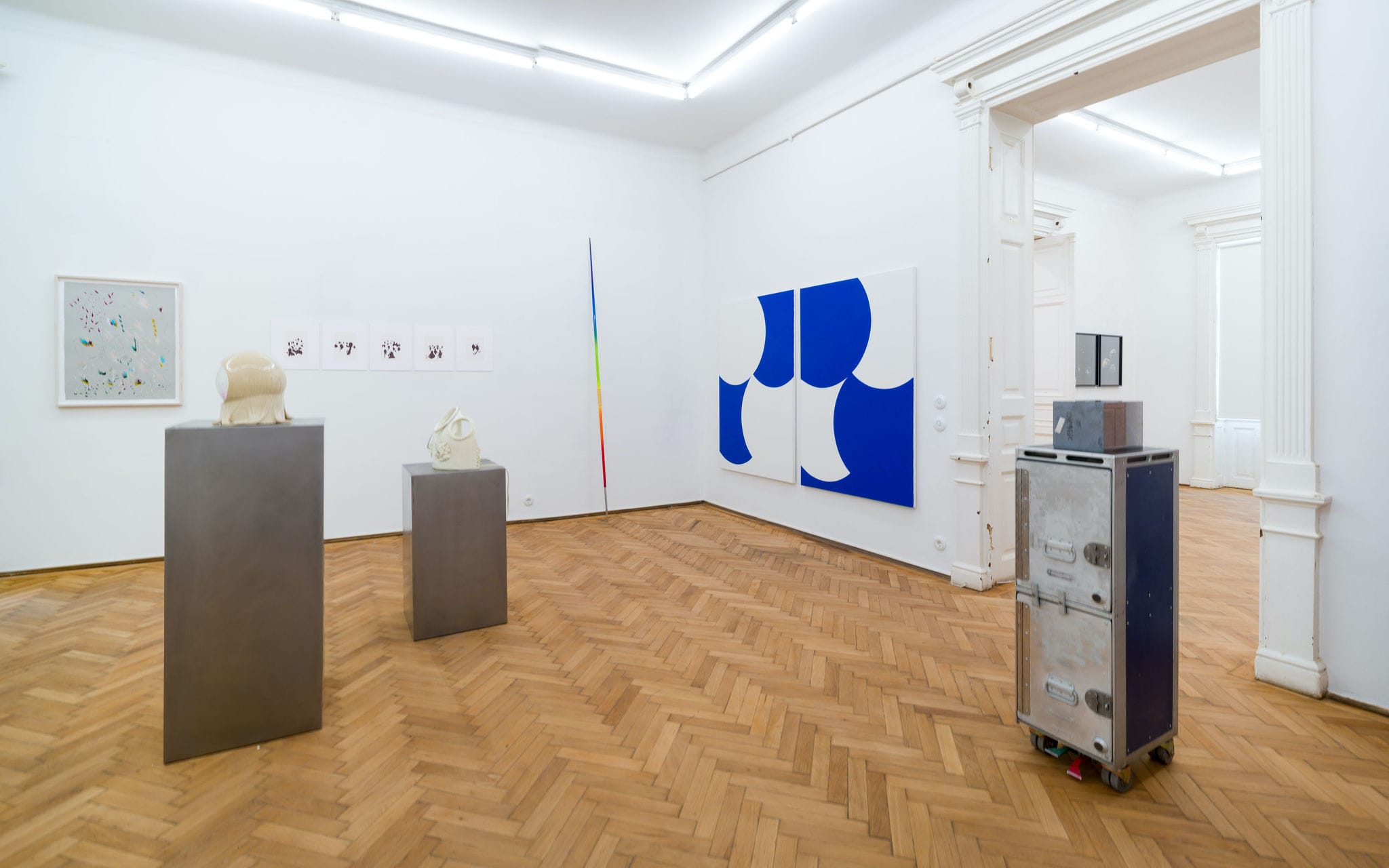
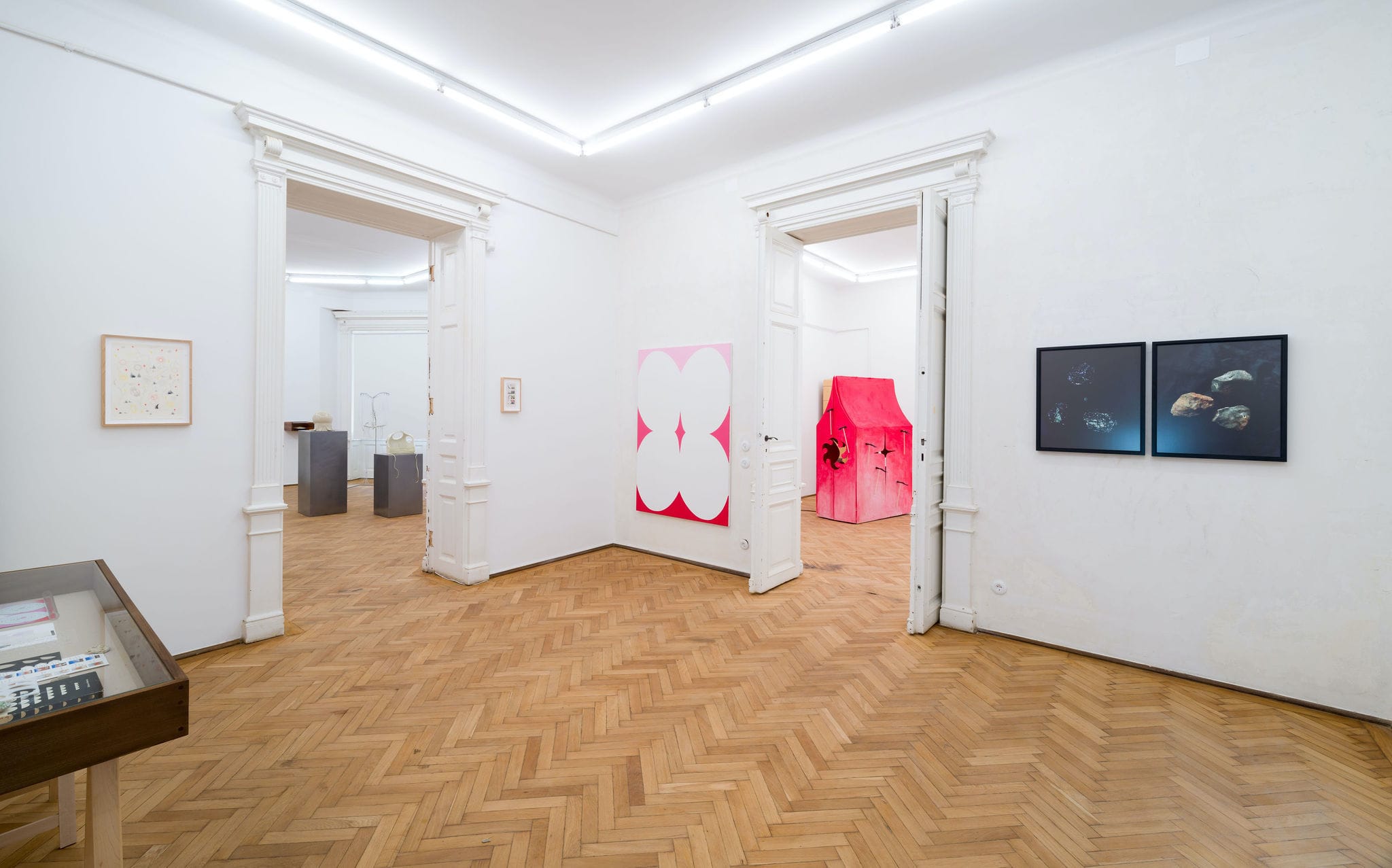
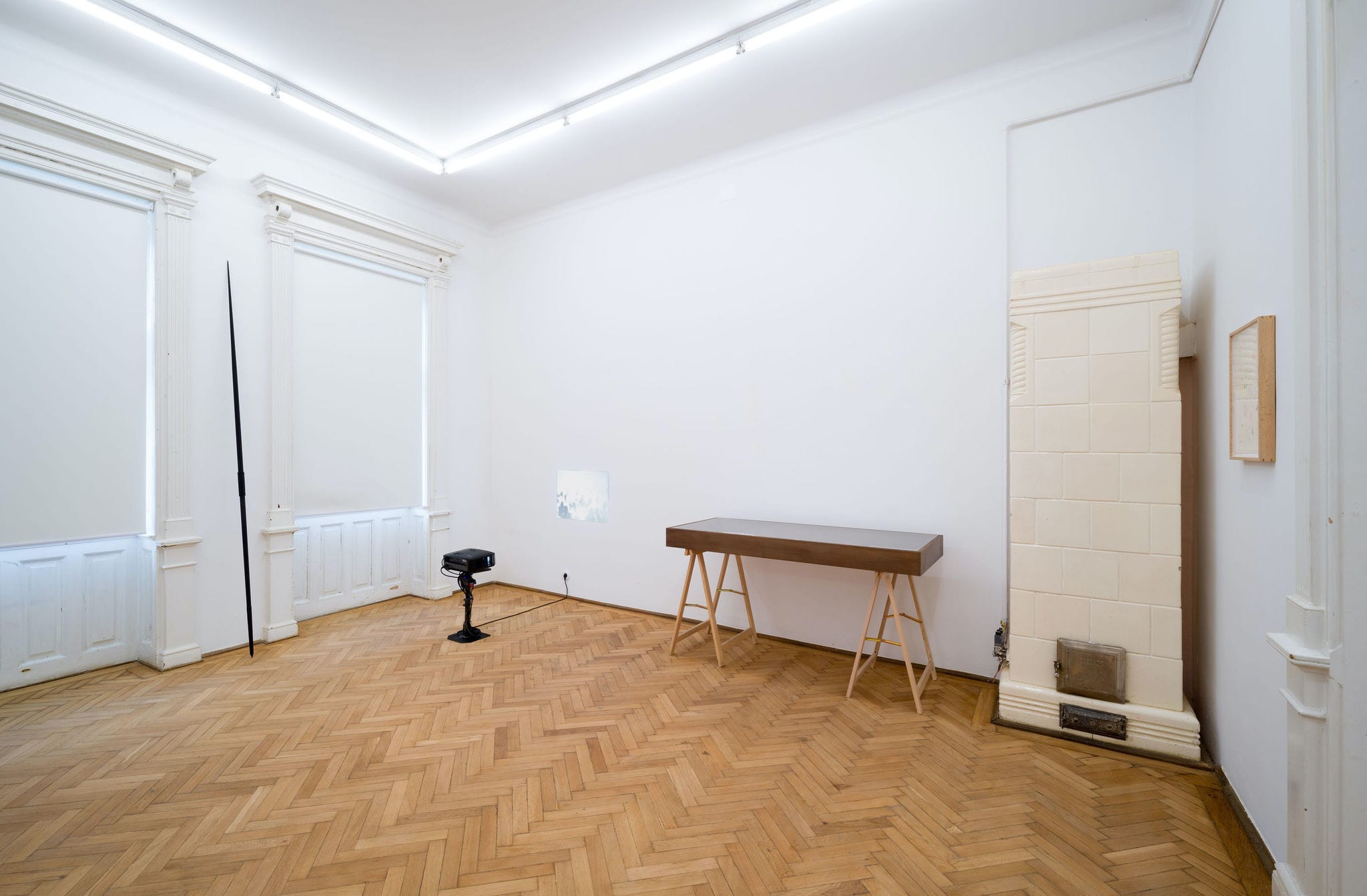
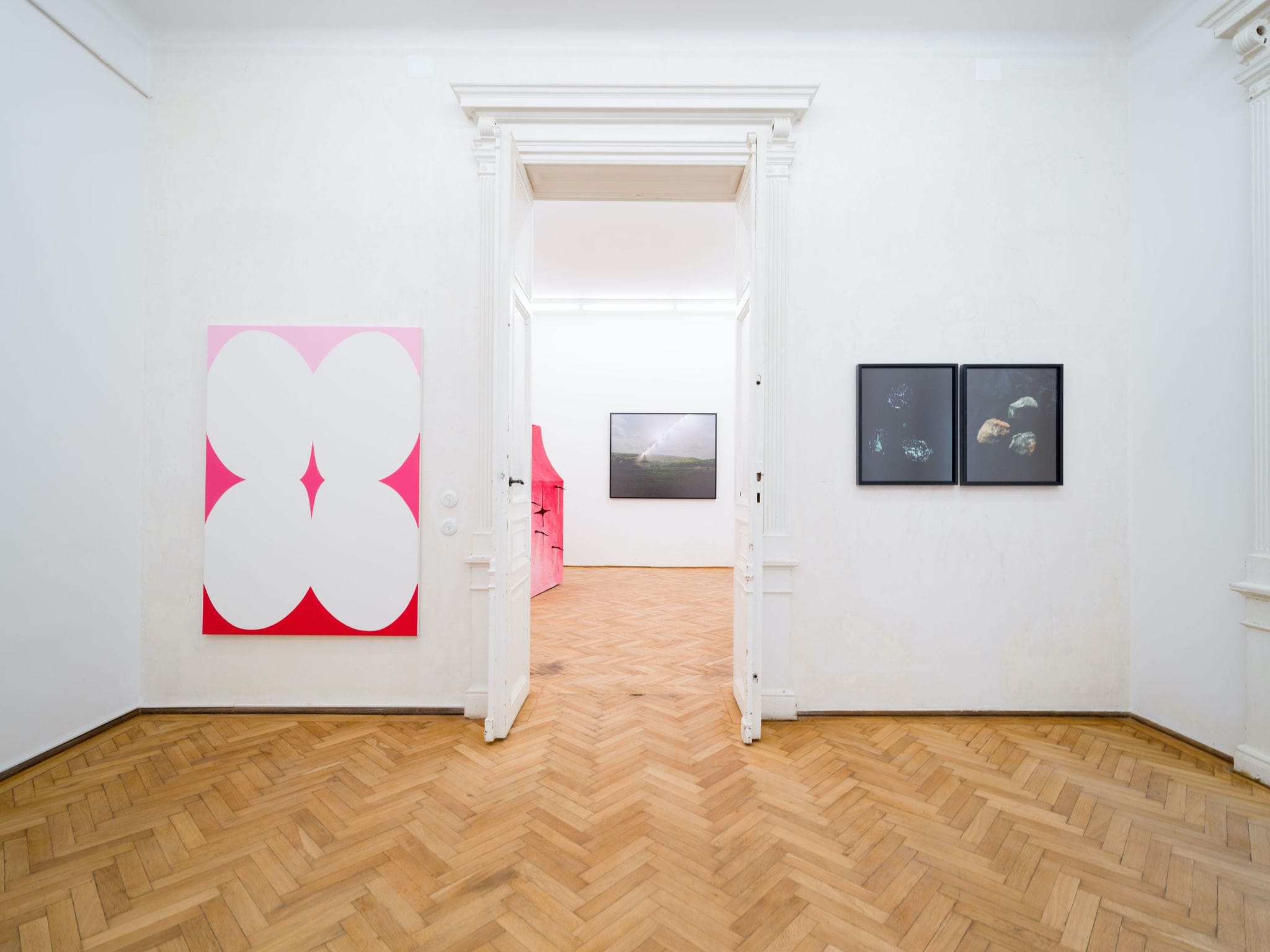
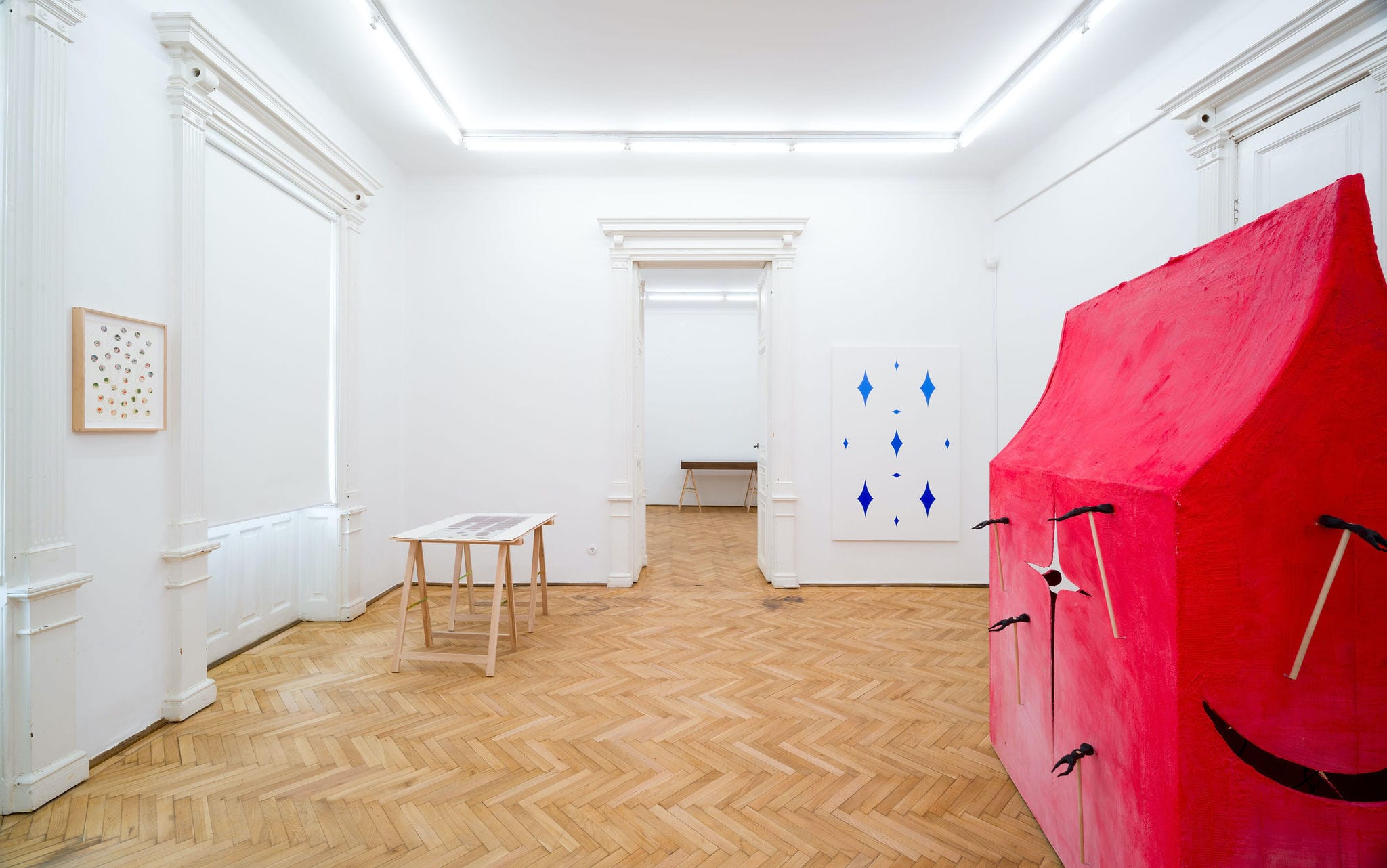
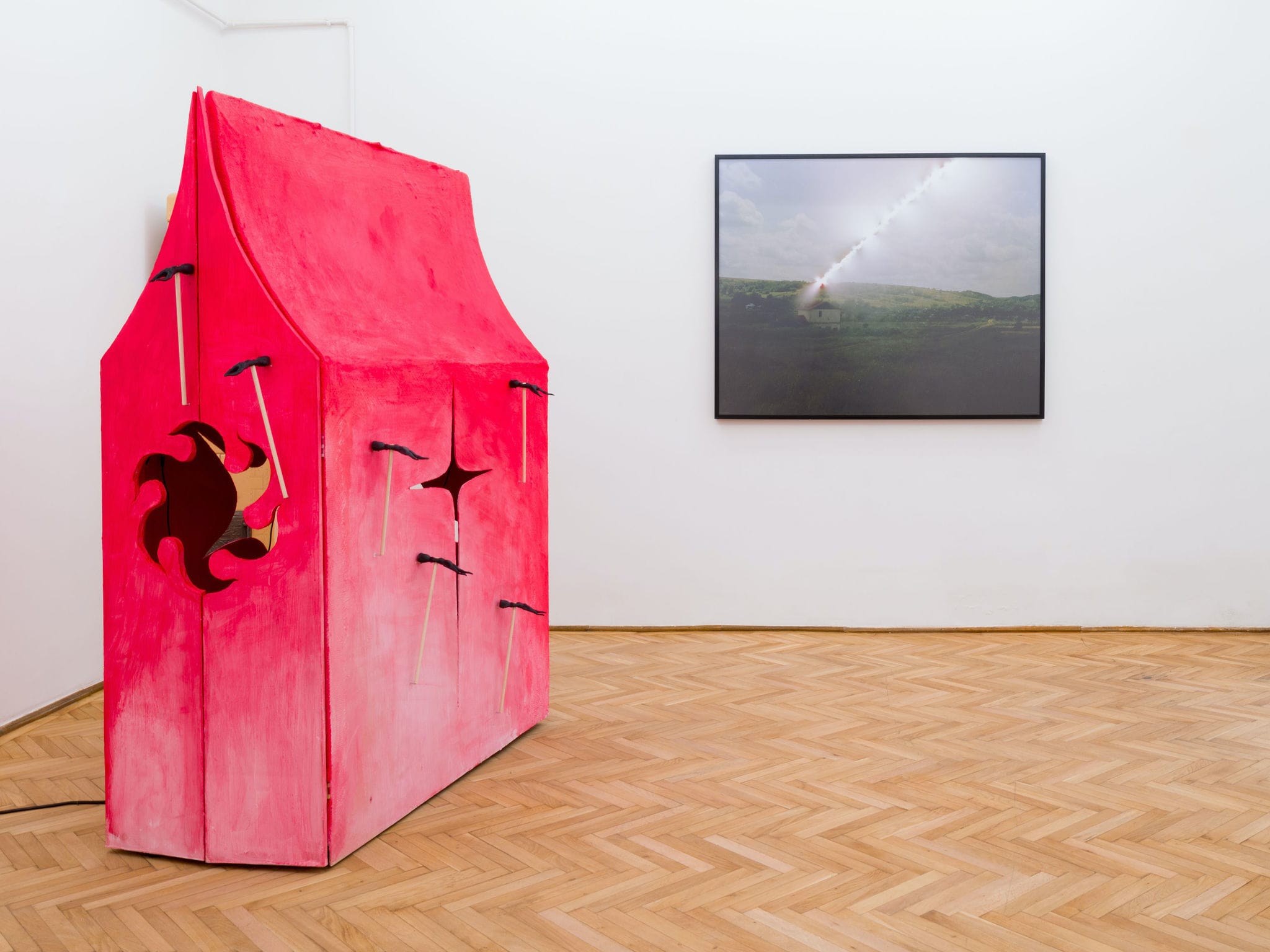
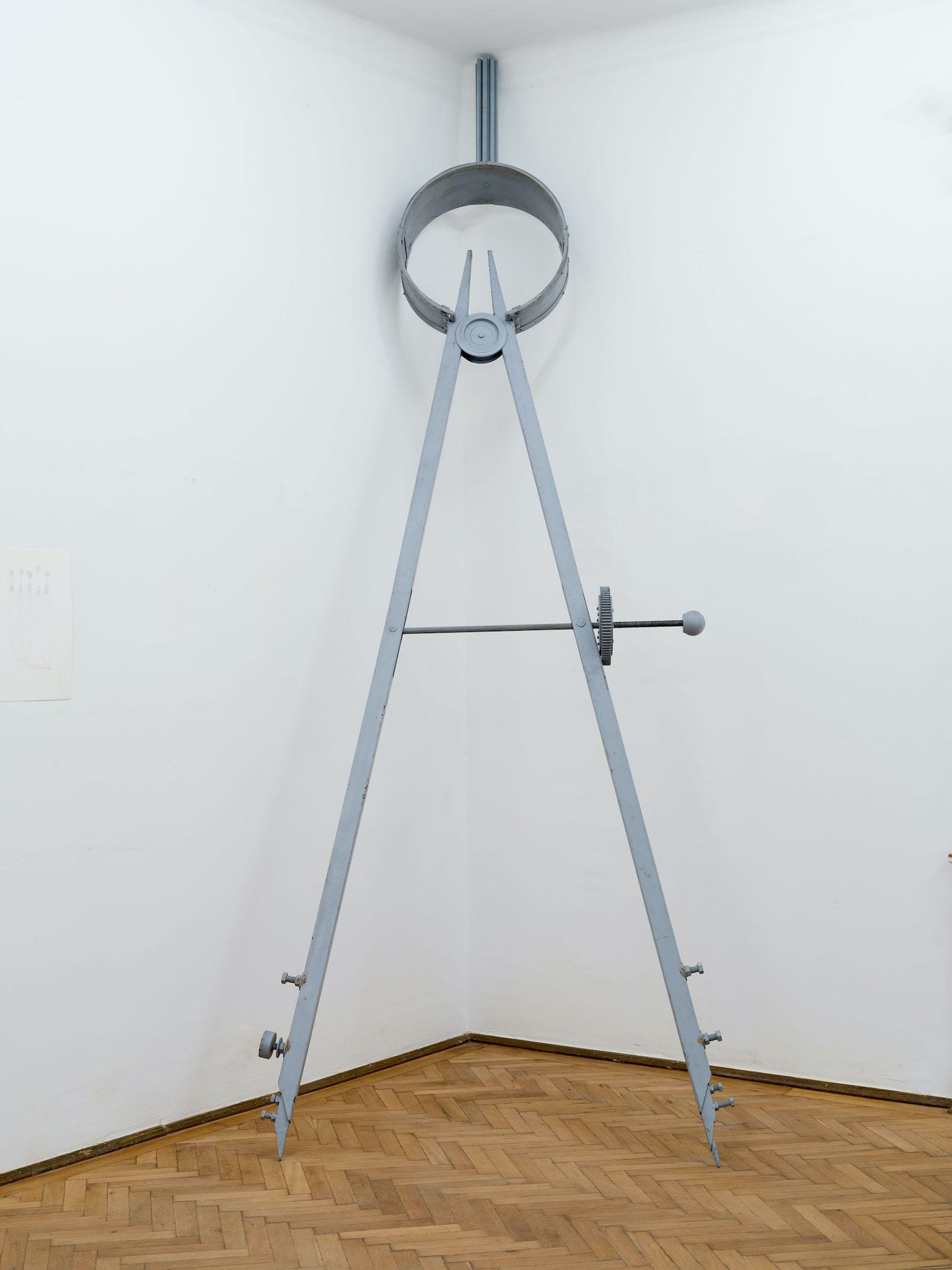
Scale of Things, 2014
Cca. 400 x 100 cm
Collection of Zenoviu Haiduc
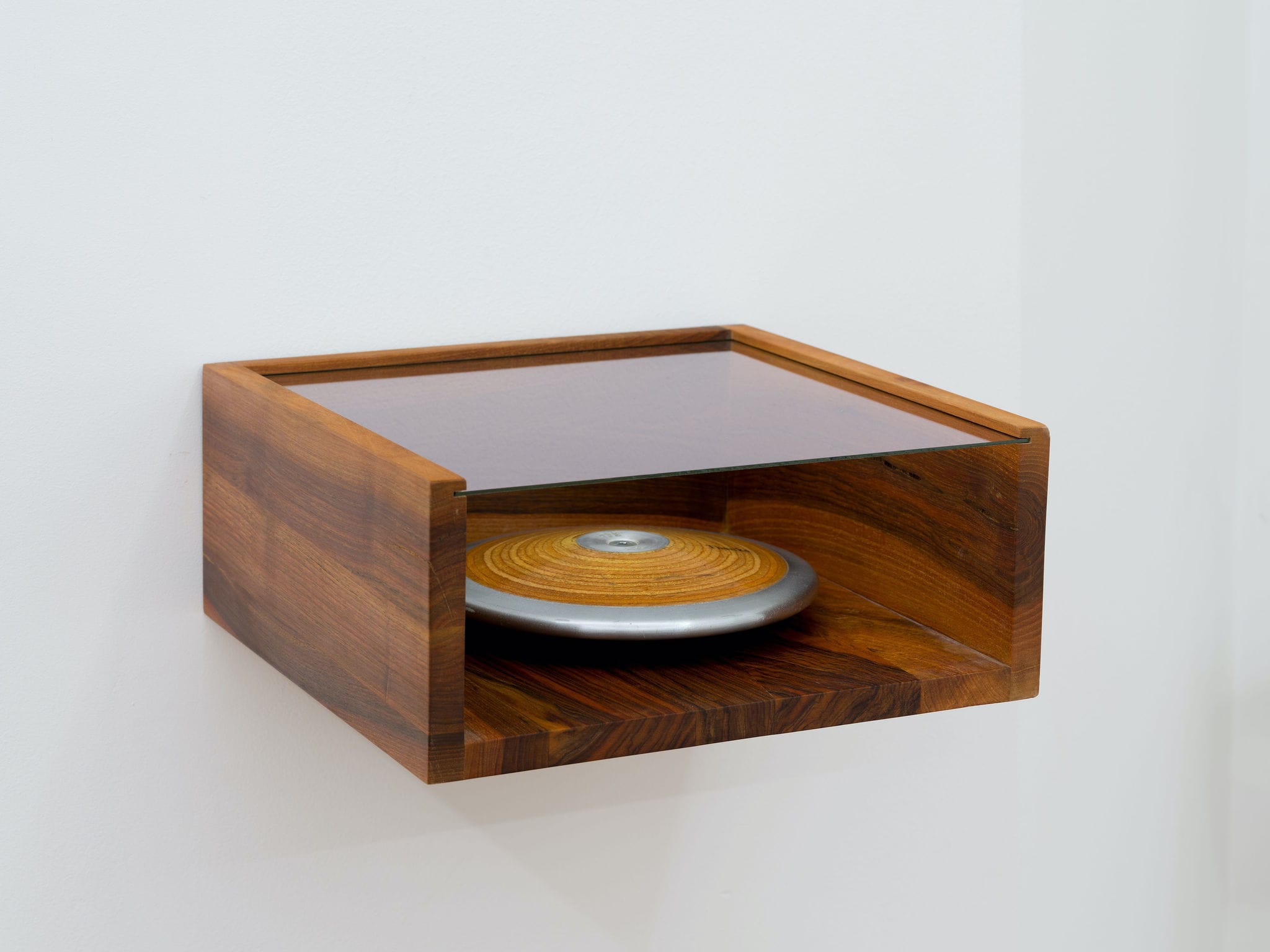
Discus, 2018
athletic discus
14 x 35.5 x 34 cm
Courtesy of GAEP
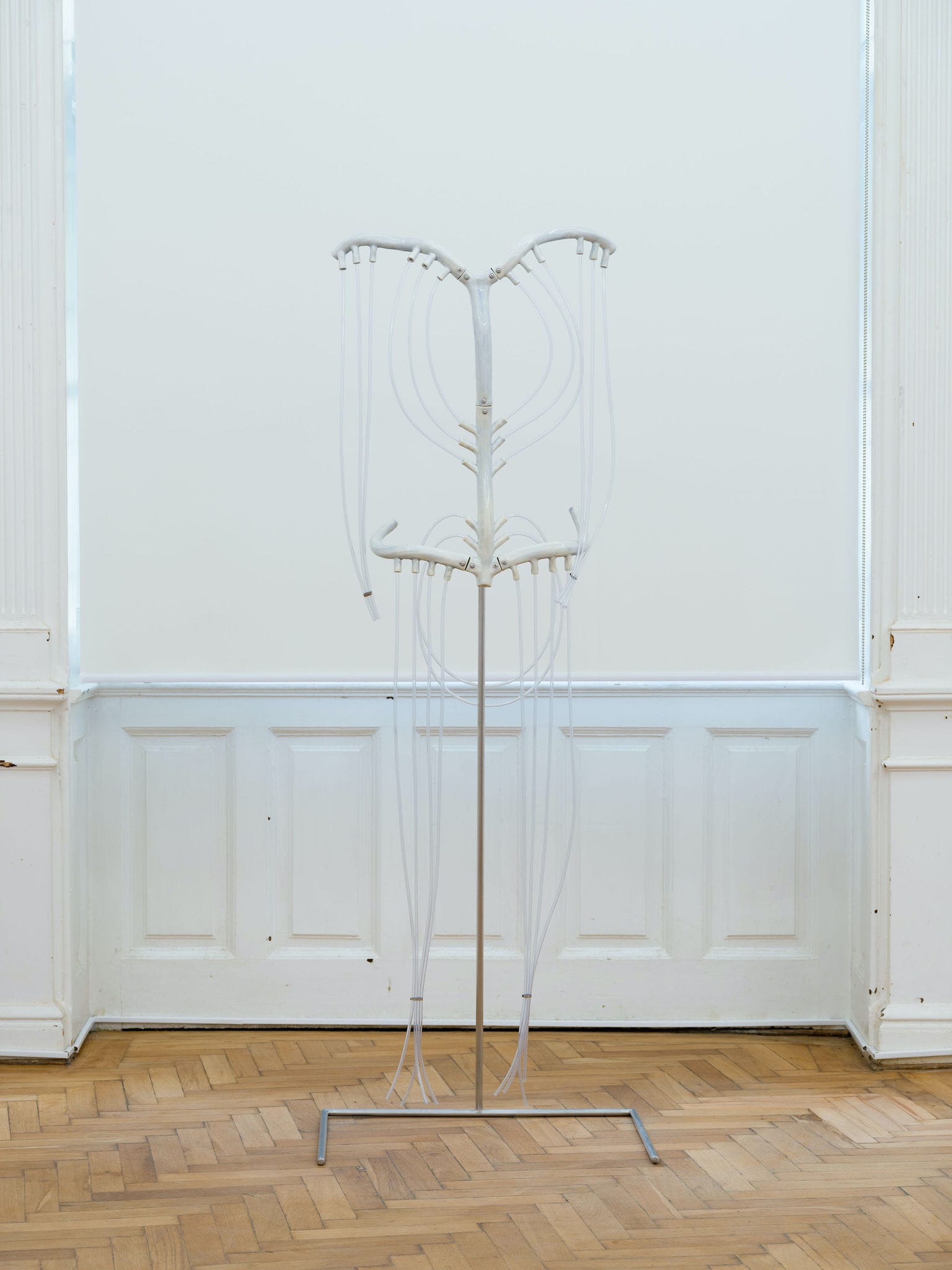
Skin Shows, 2024
Glazed ceramic, stainless steel, polyvinyl tubes
168 x 53 cm
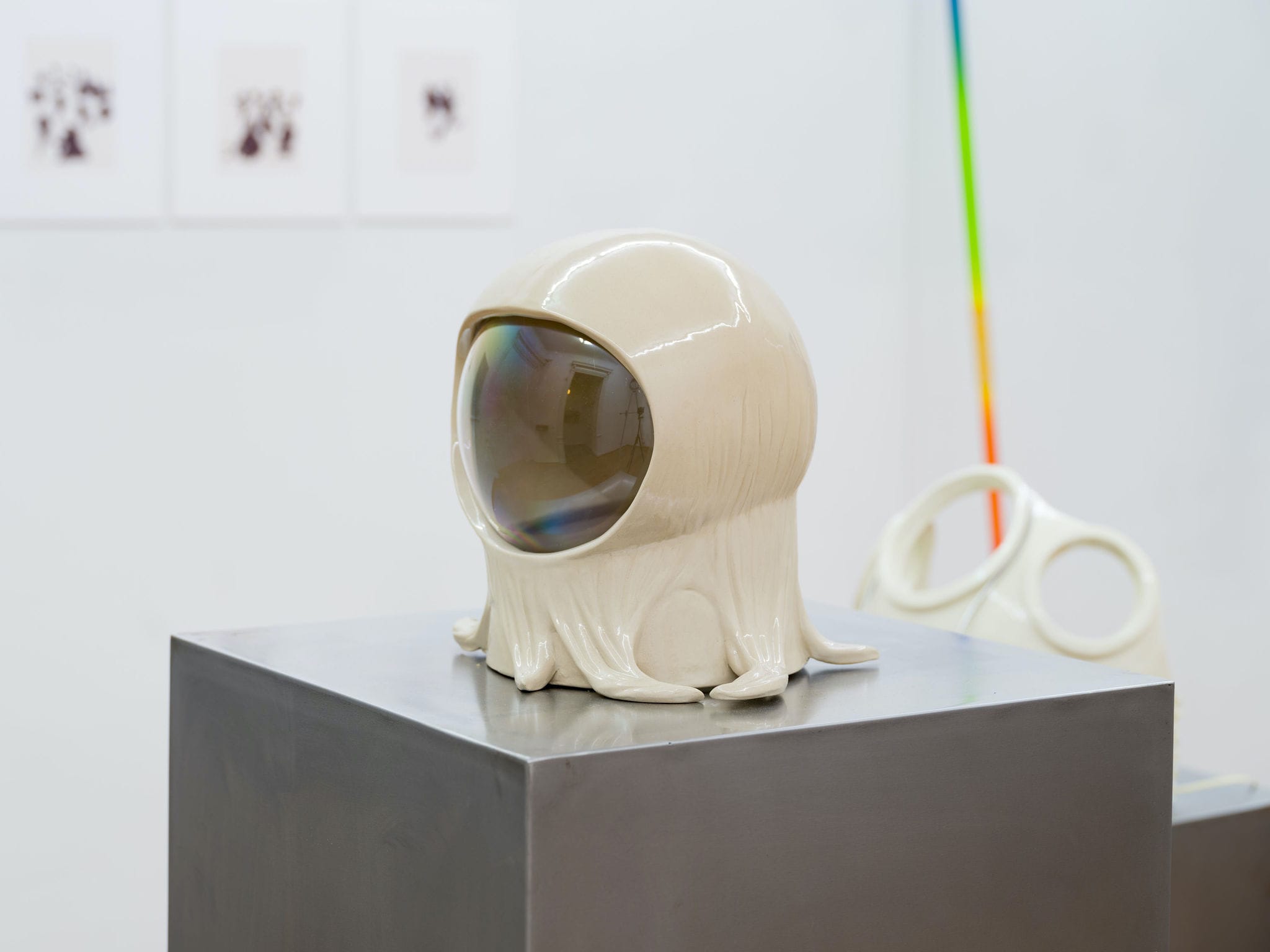
In the Blink of an Eye, 2024
Glazed cermic, clear acrylic
27 x 27 cm
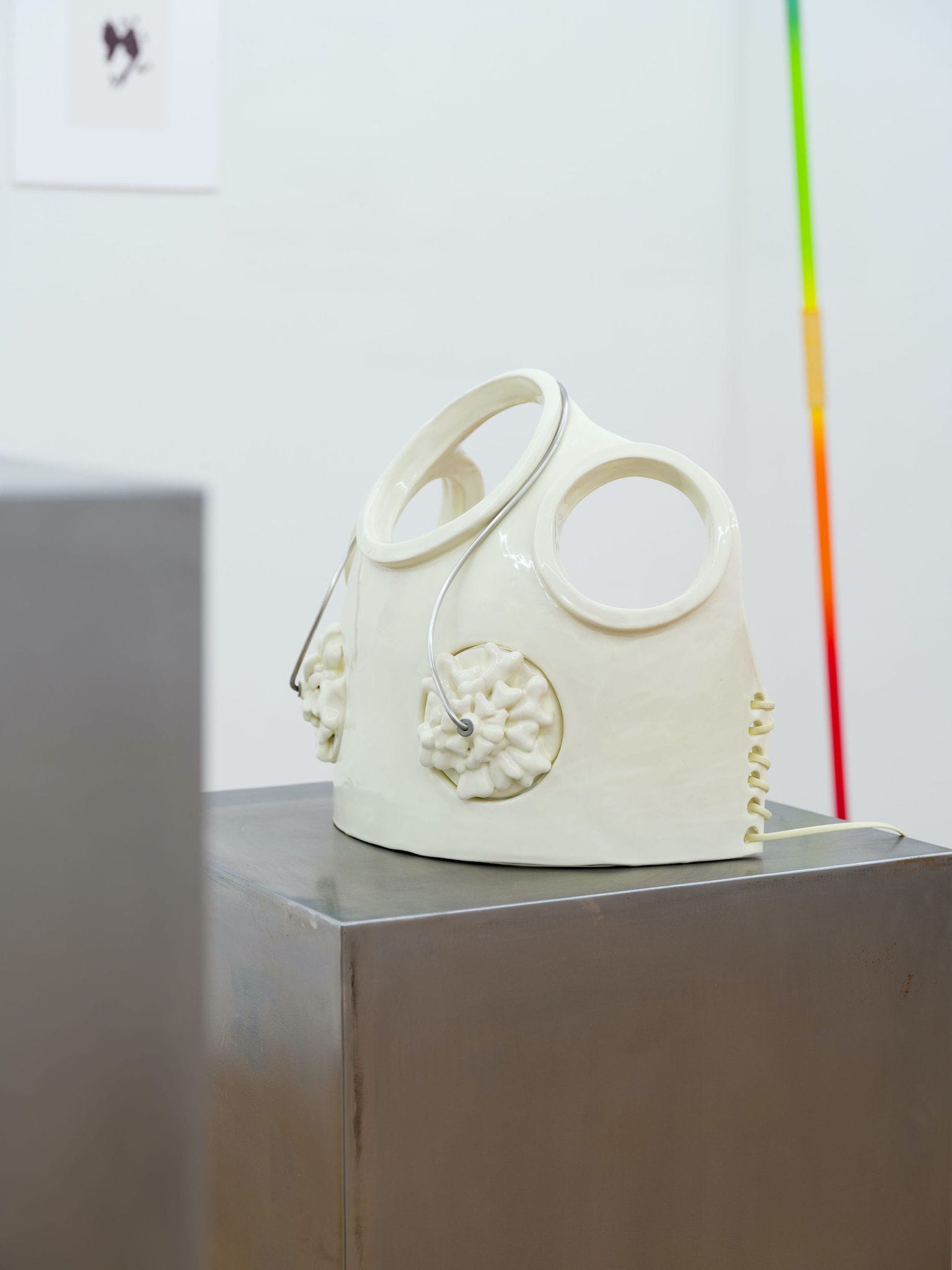
Double Stars, 2024
Glazed ceramic, stainless steel, copper wire and polyvinyl
chloride
32.5 x 36 cm
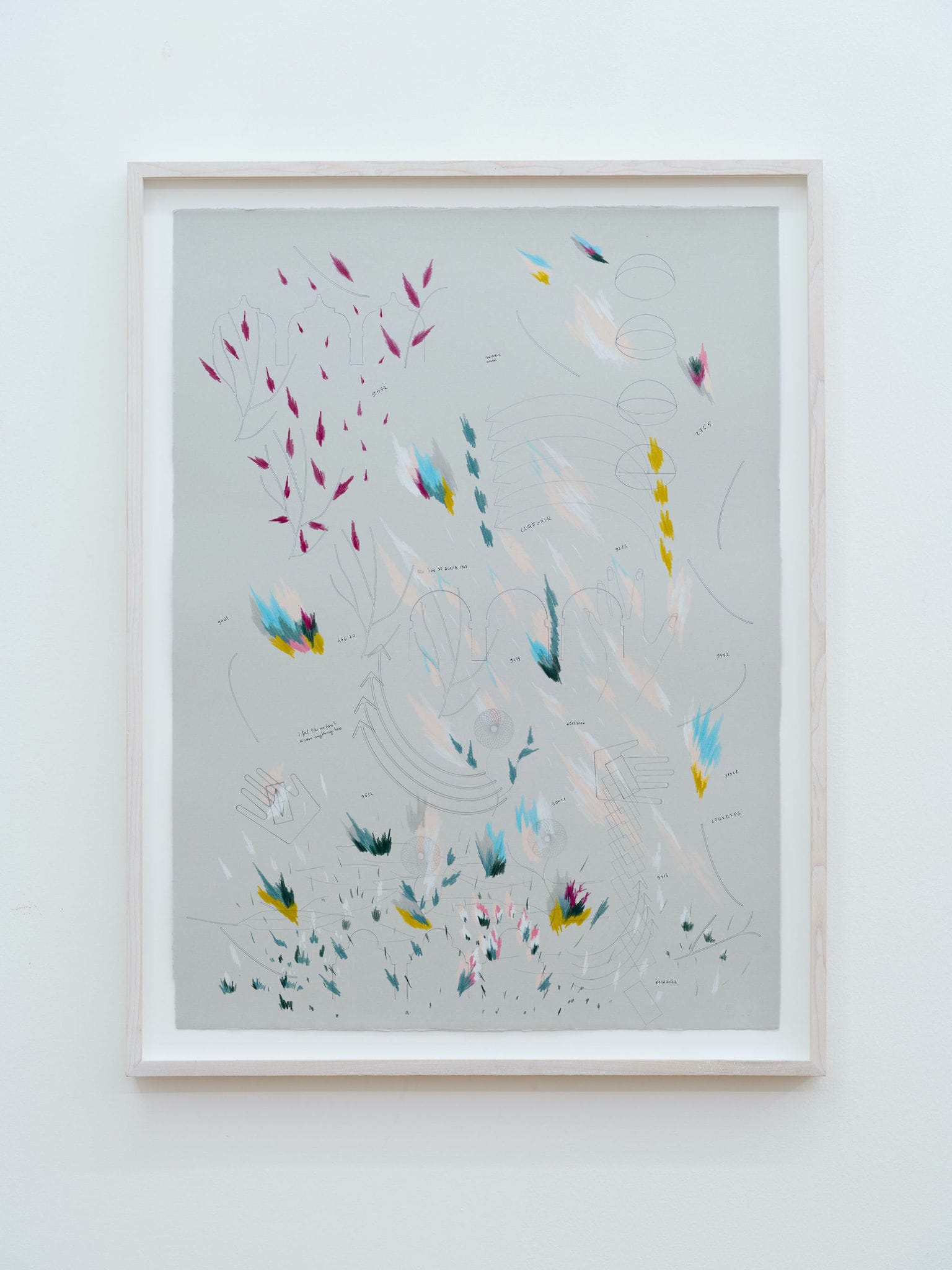
Notes S23G001, 2023
Drawing on grey paper
56.8 x 77 cm
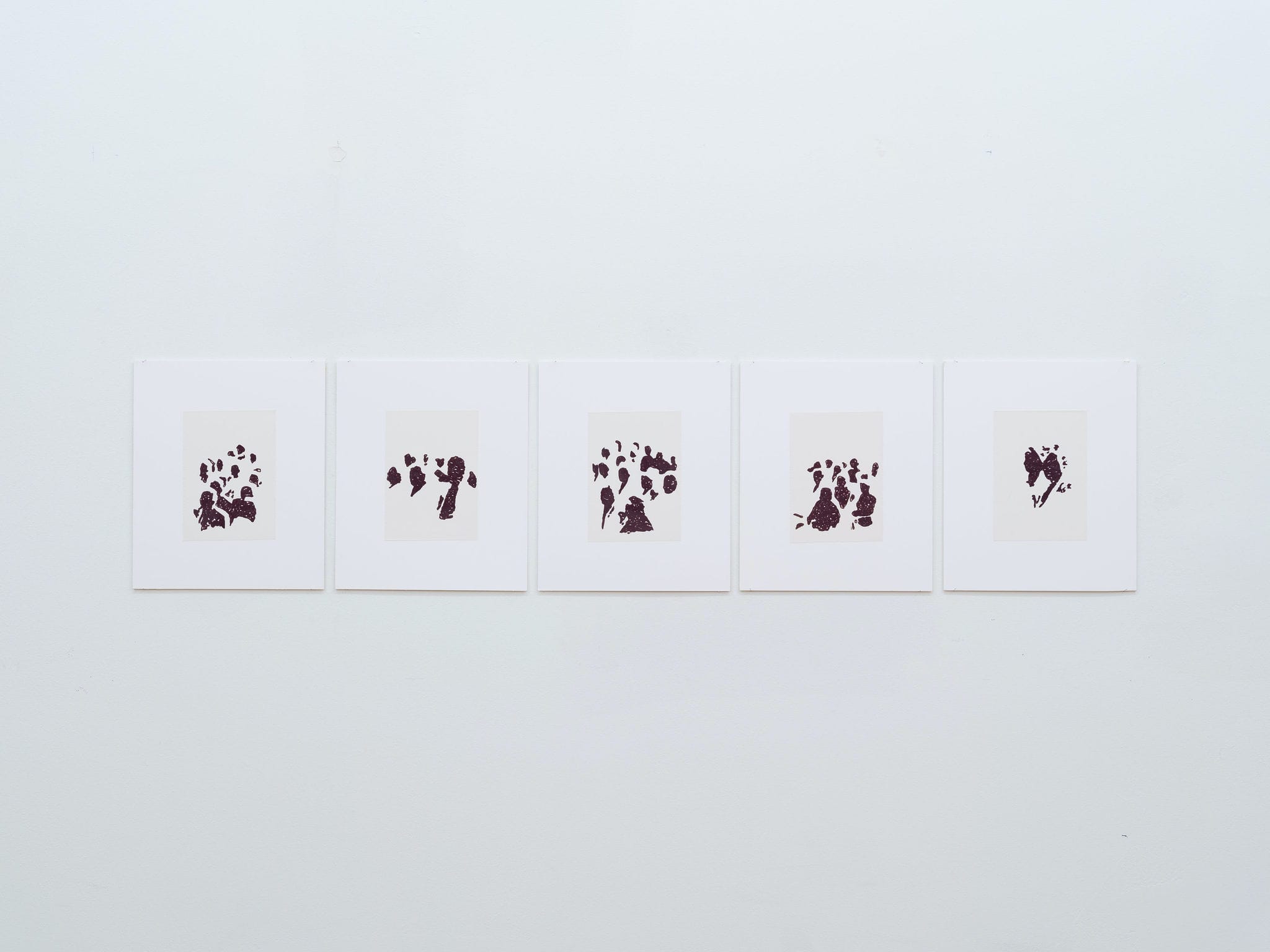
Burning studies (series), 2020
Drawing with magnifying glass on thermal paper,
21 x 15 cm each
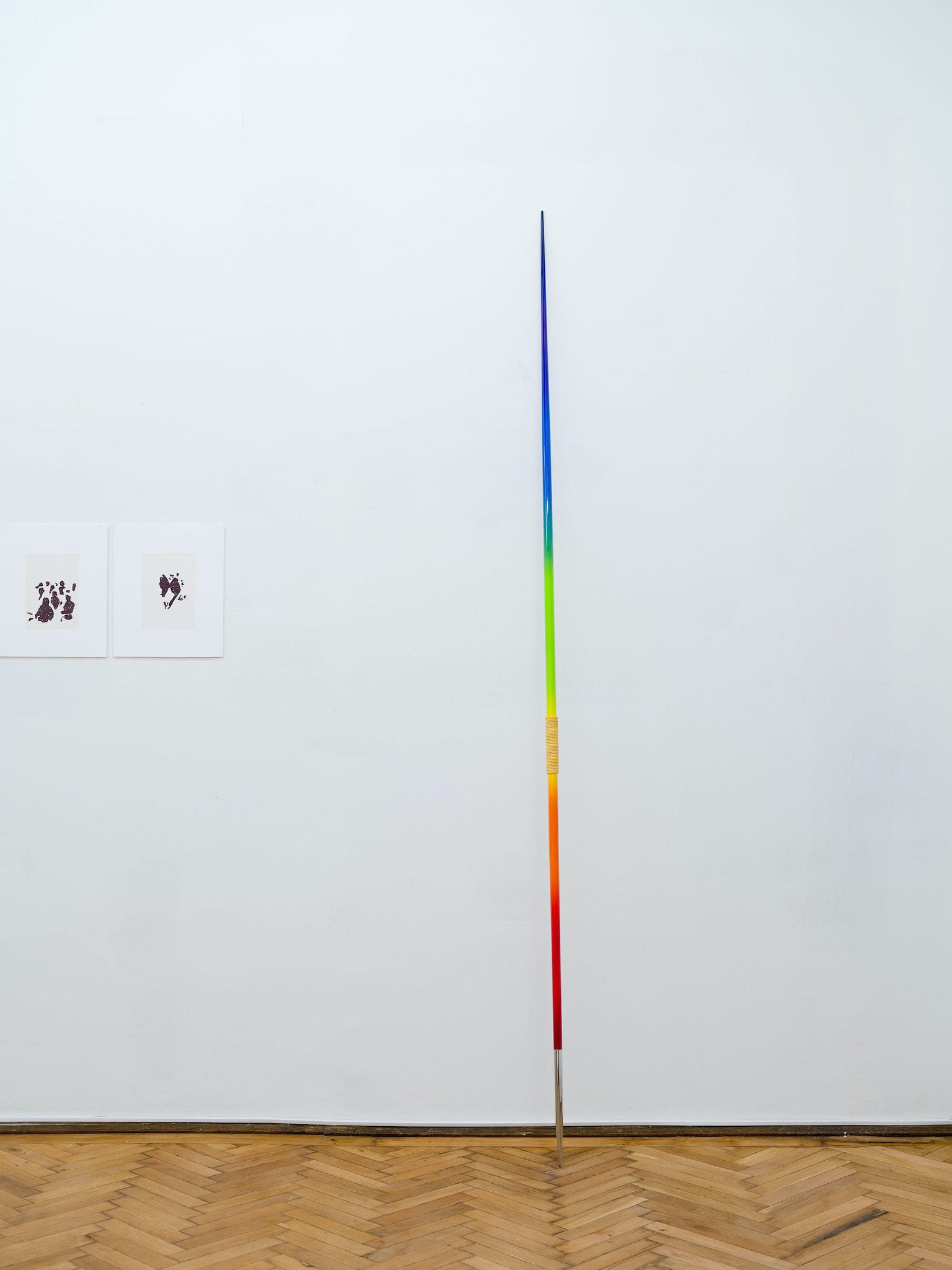
Spectrum, 2019
Javelin, paint
260 cm
Courtesy of GAEP
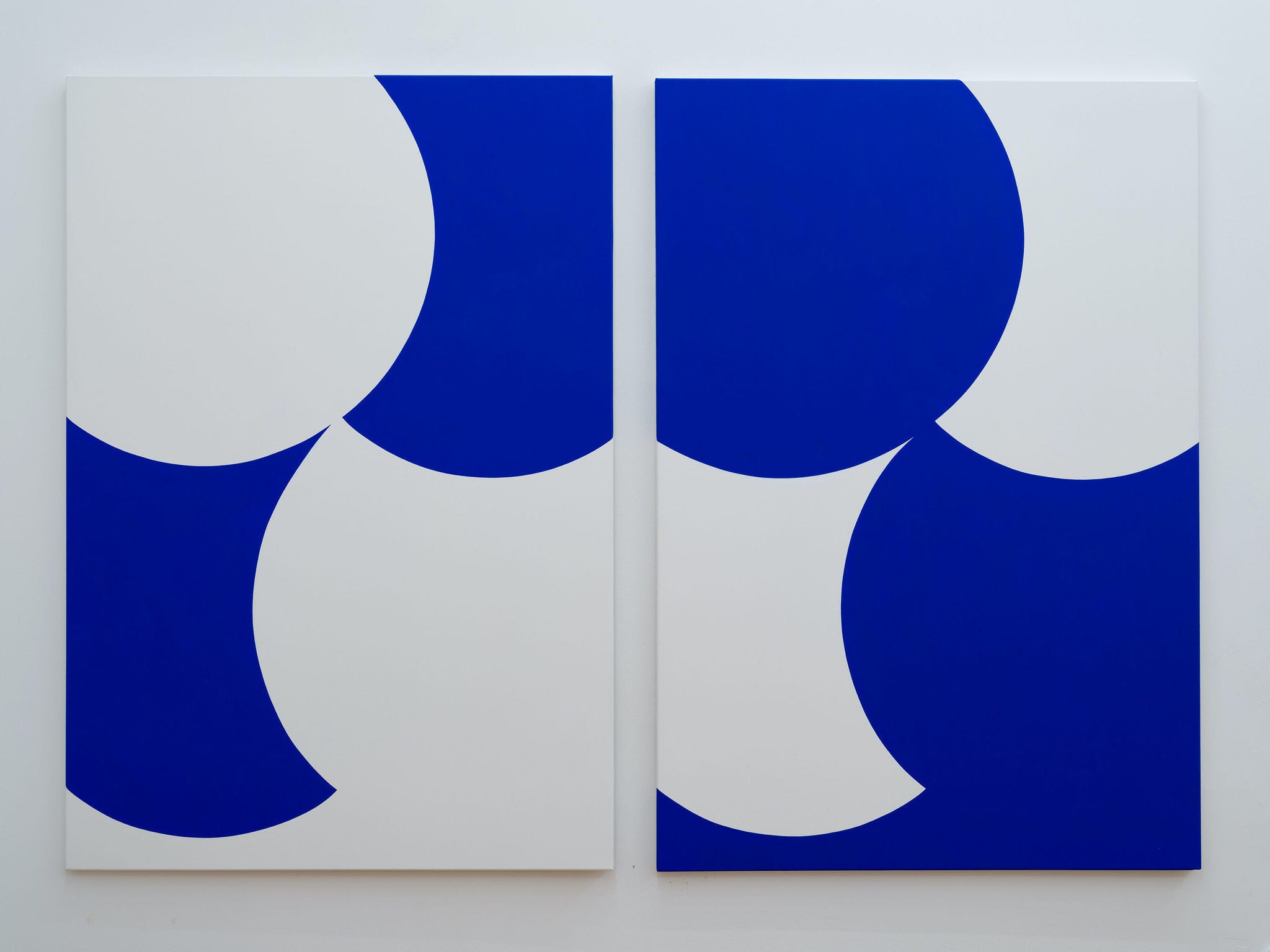
Soft Exchange (diptych), 2024
Acrylic on canvas
110 x 160 cm each
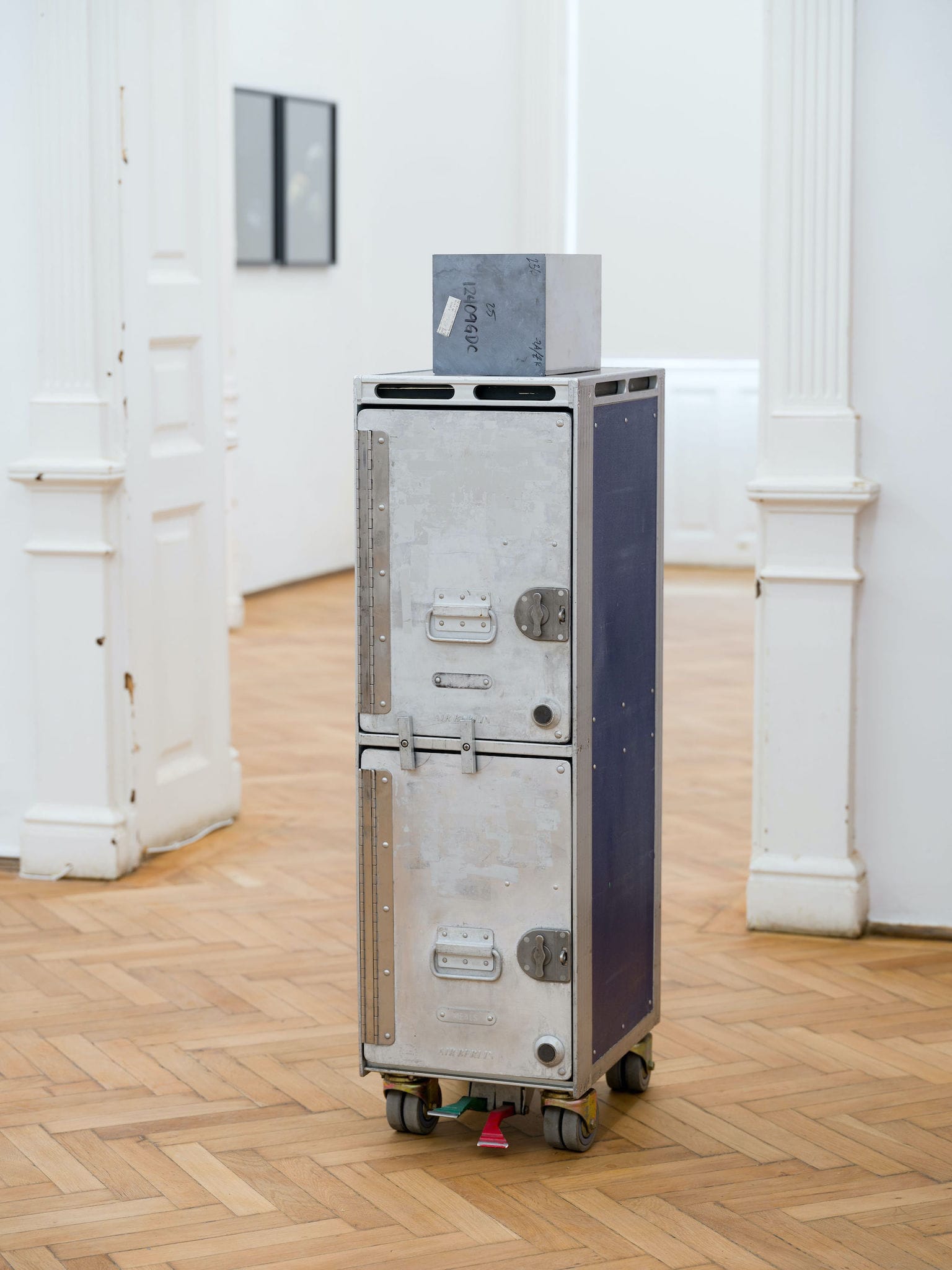
Silicon Crystal, 2021
Silicon crystal 99.999%, aircraft cabinet
Silicon crystal: 15.5 x 15.5 x 23.7 cm; cabinet: 102 x 30.5 x 40 cm
Courtesy of GAEP
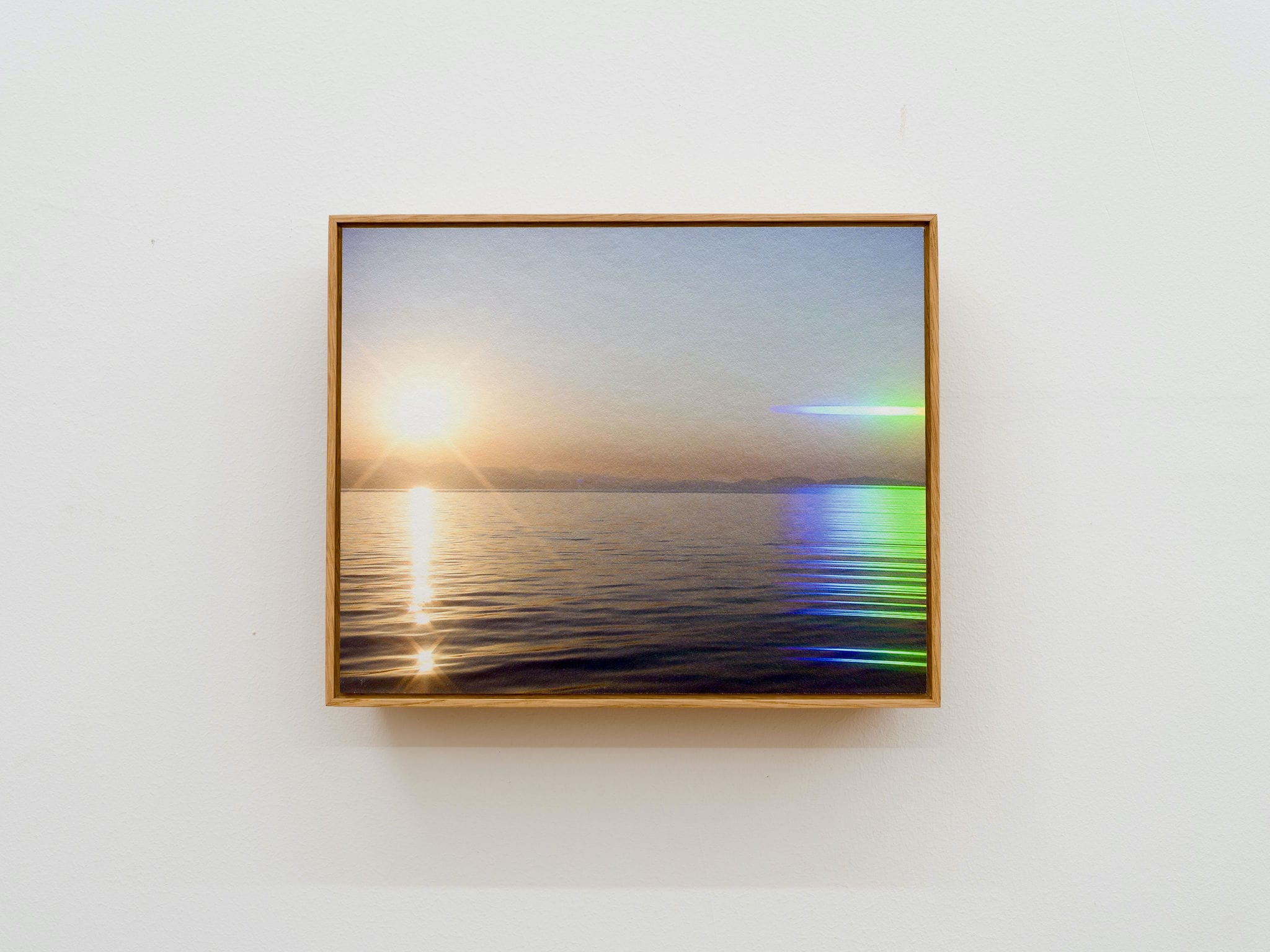
Mirror Landscape 2, 2024
Inkjet print on Hahnemühle Photo Rag Metallic
22 x 27.5 cm
Courtesy of GAEP
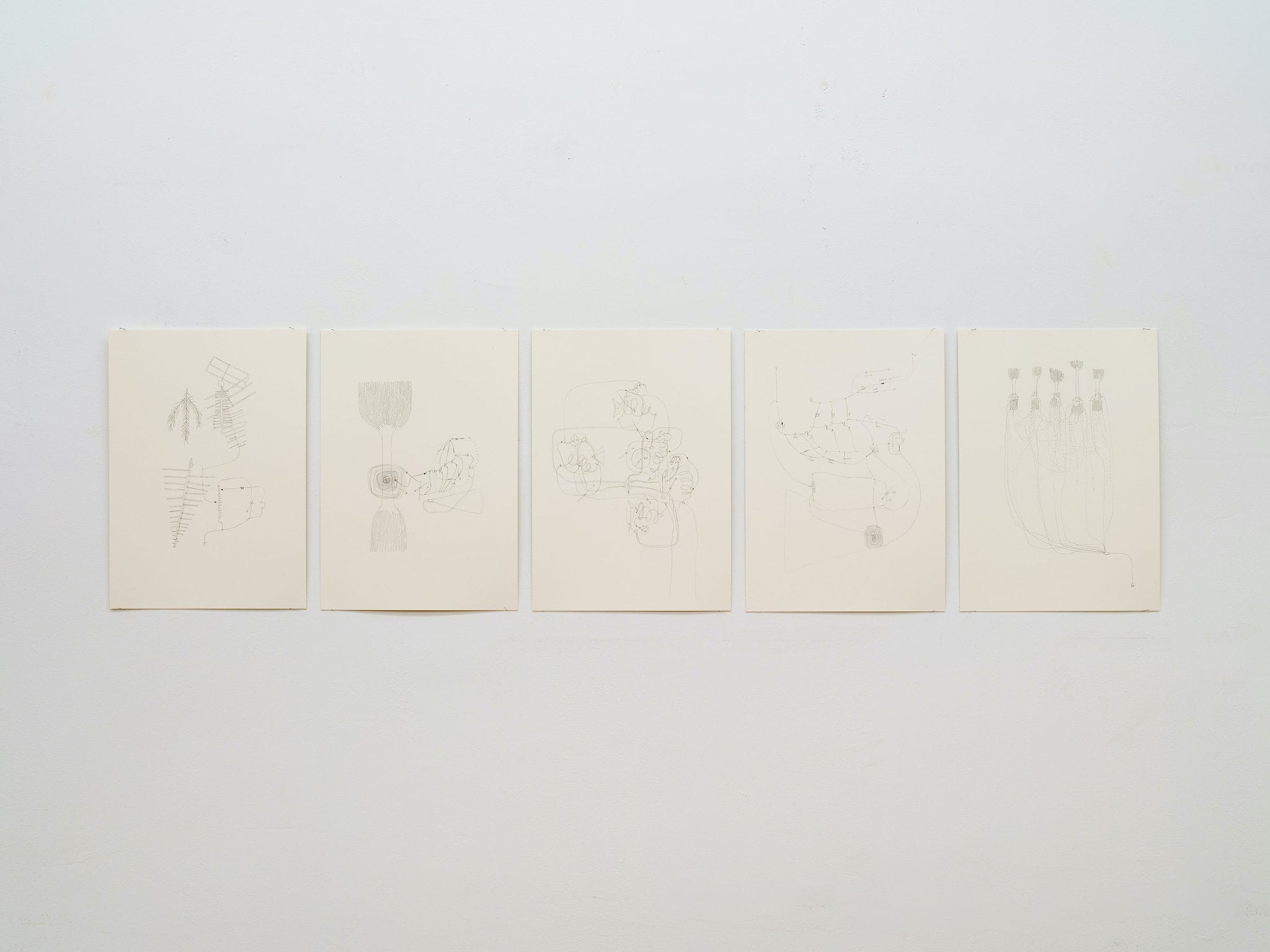
Arboreal Receptors, 2021
A3 pencil drawings, circuit diagrams
42 x 29.7 cm
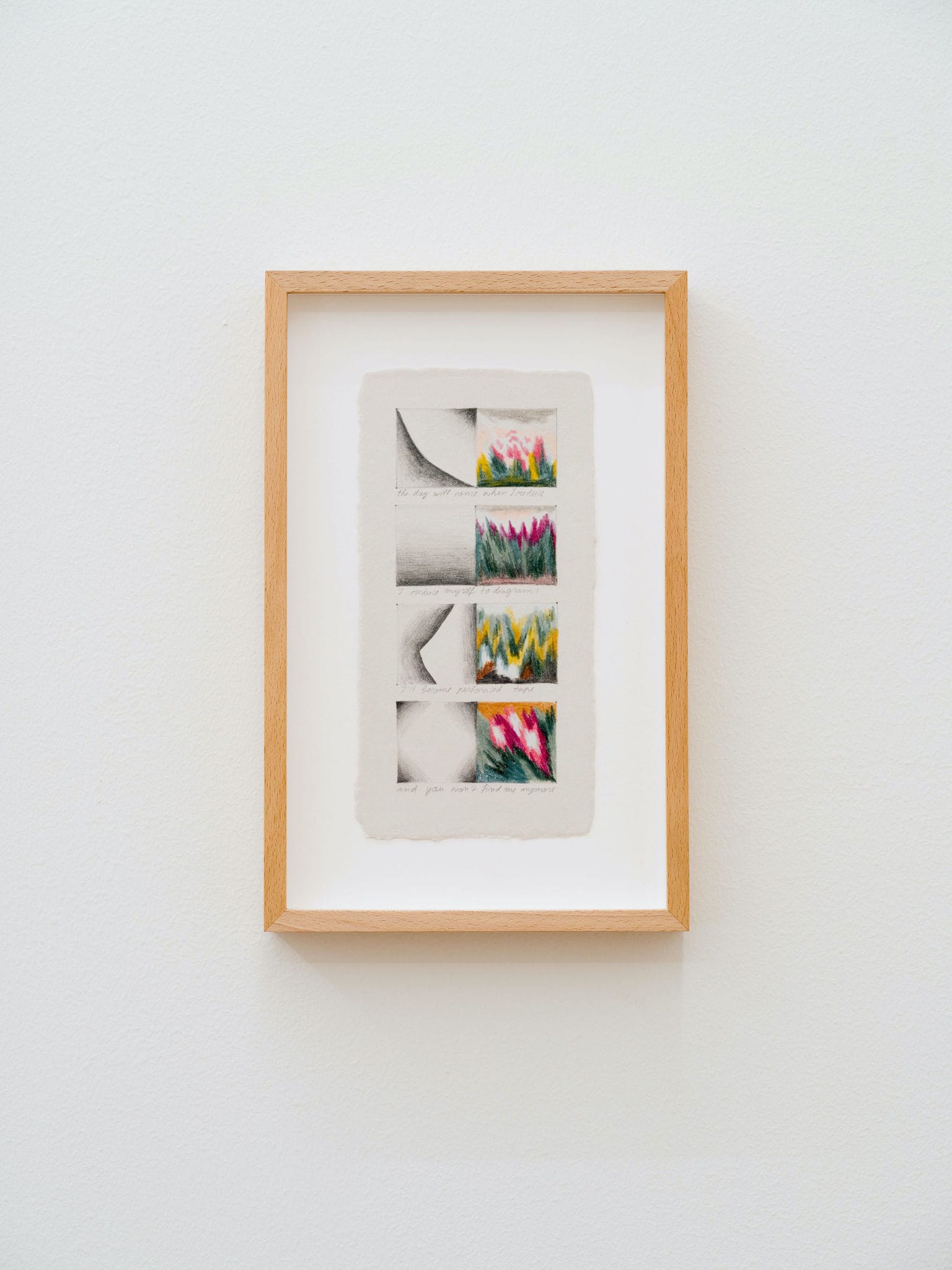
Sample S23WH01, 2023
Drawing on grey paper
10.5 x 21 cm
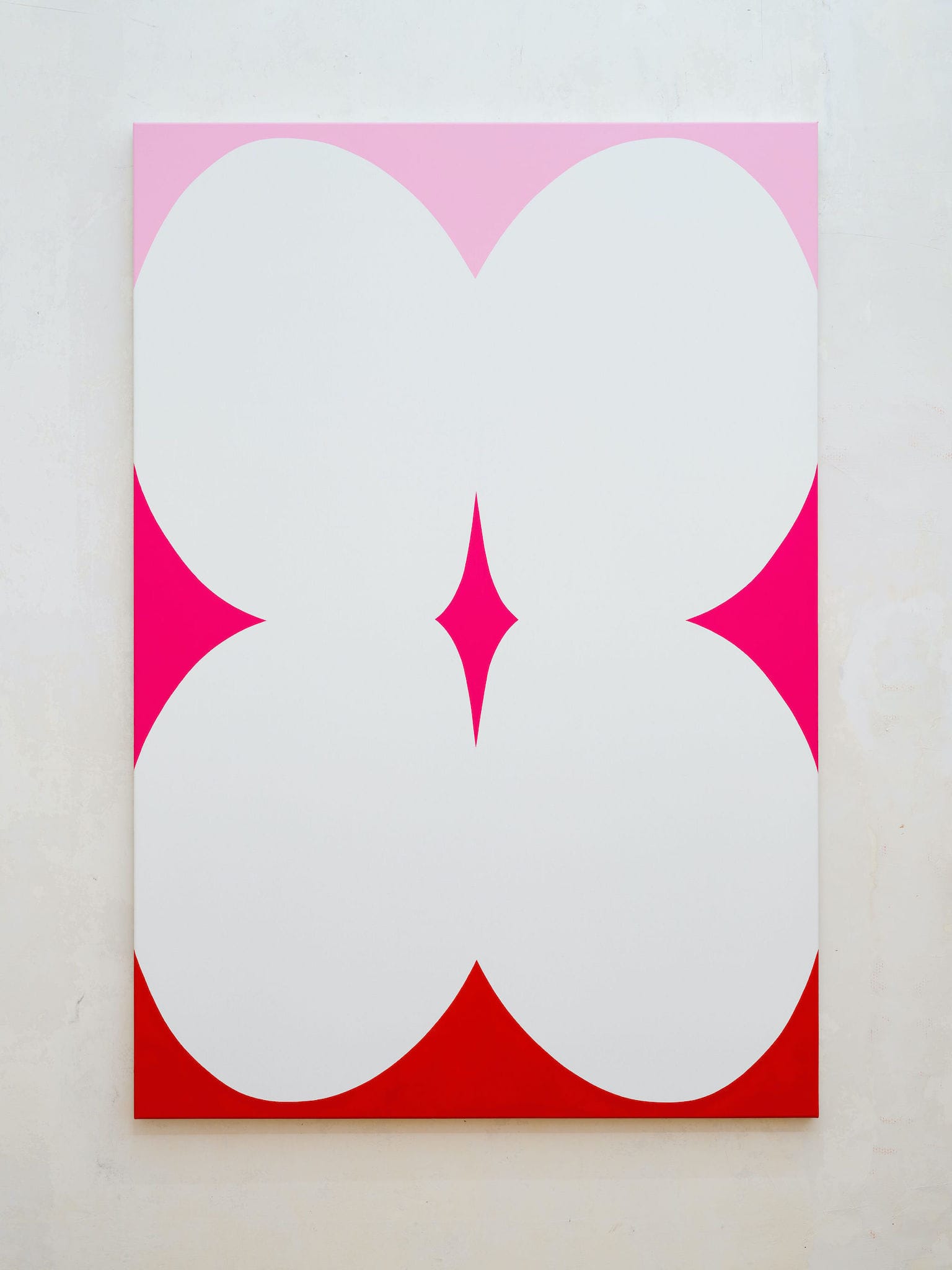
Dreaming About Life, 2024
Acrylic on canvas
110 x 160 cm
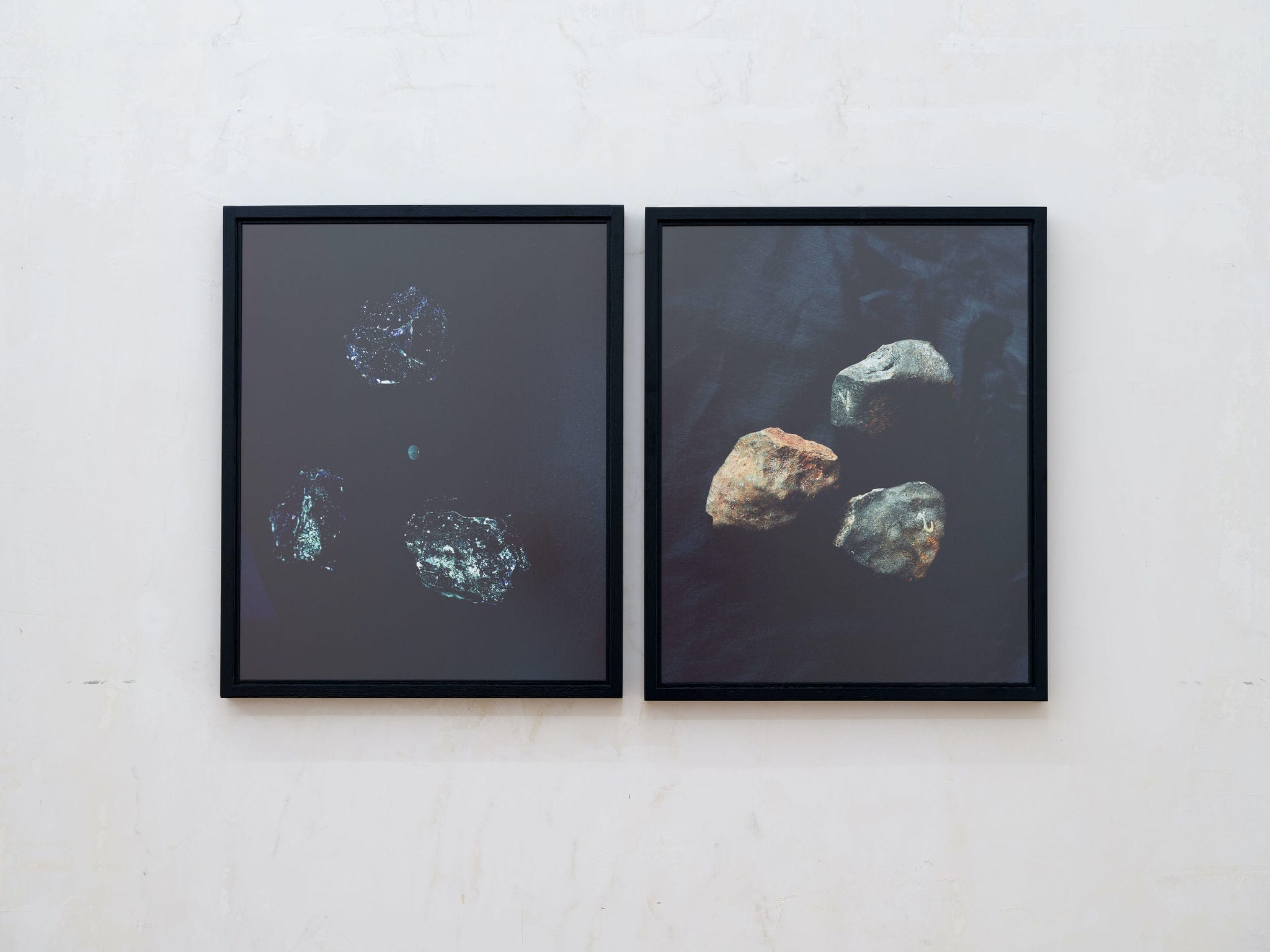
Sopot meteorite, Oltenia Museum, 2018
Archival inkjet print on Hahnemuhle baryta paper, mounted on
dibond
Ed 1 of 5 + 1AP
60 x 48 cm
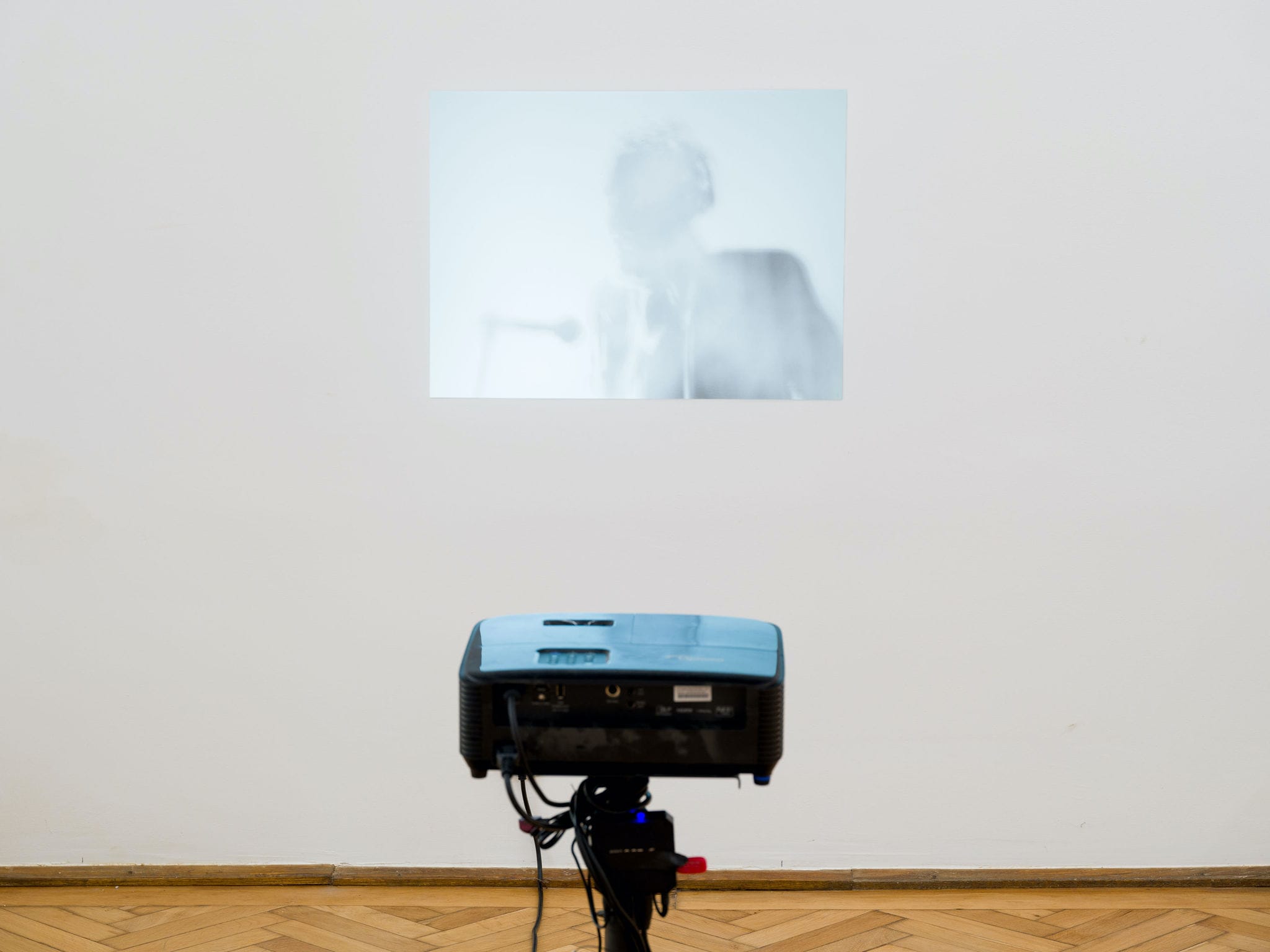
Reflective study (audience) & Reflective study (speech), 2020
Video loop
3’09, respectively 2’30
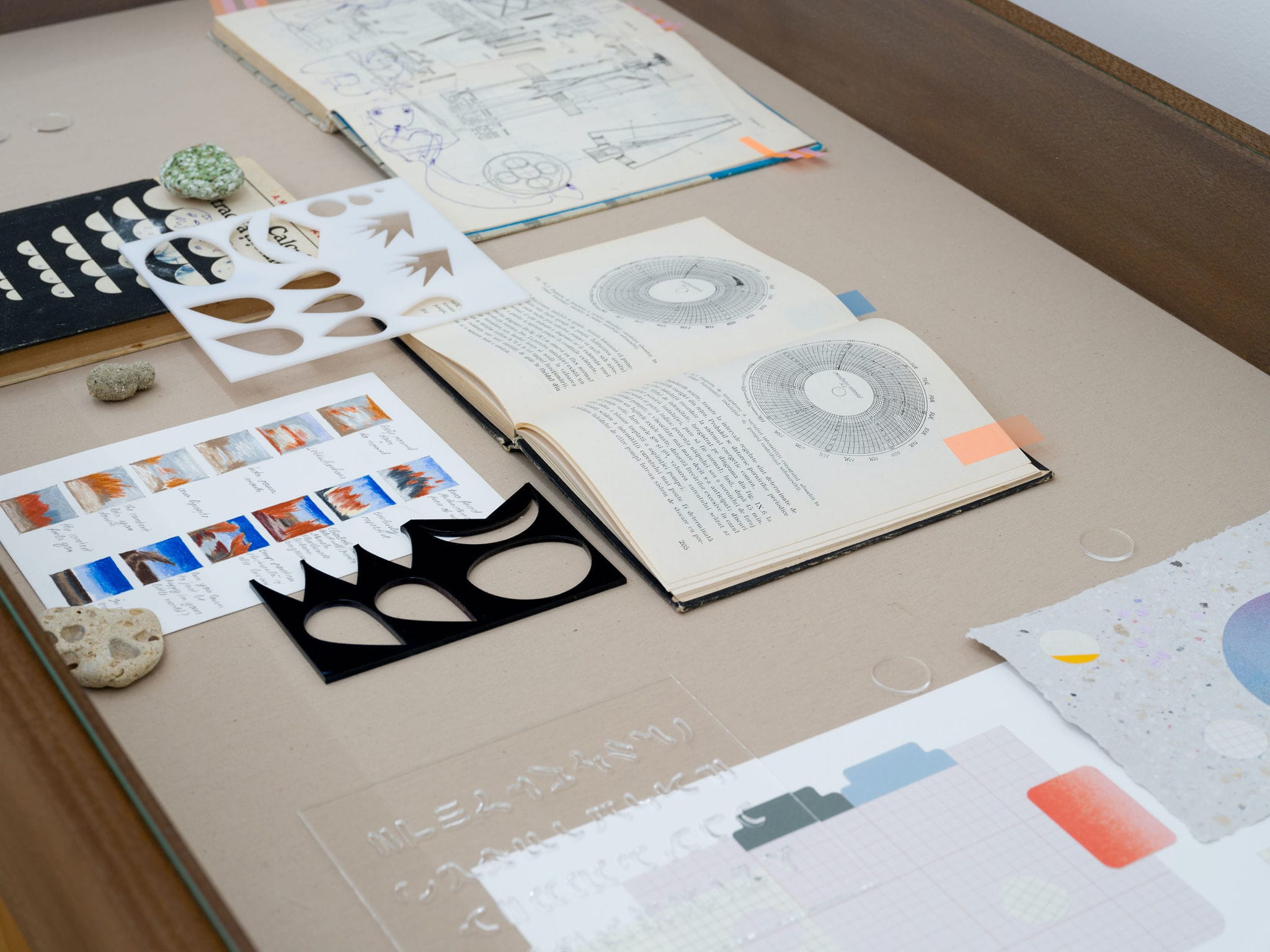
Display case
objects, books, drawings
variable dimensions
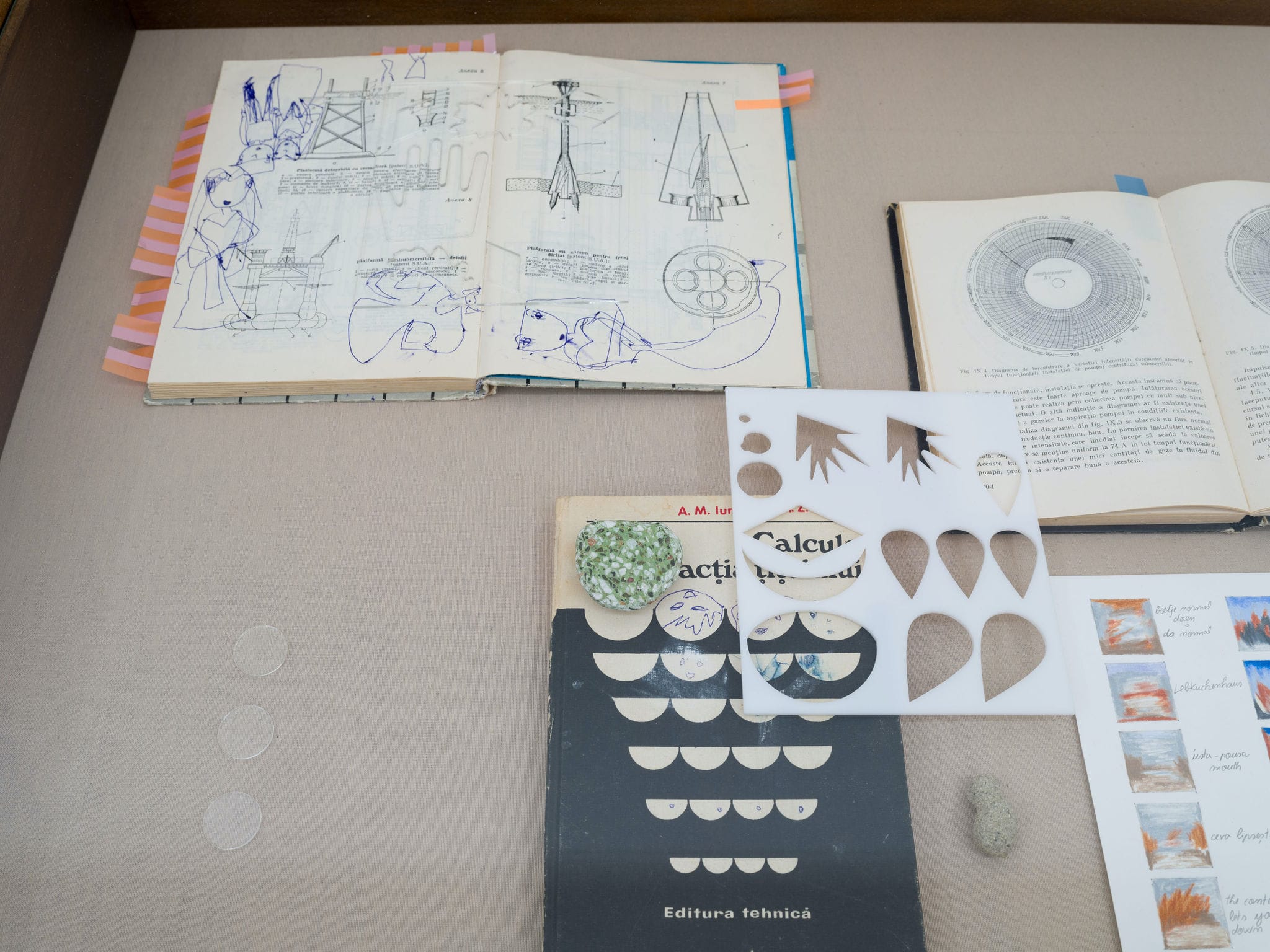
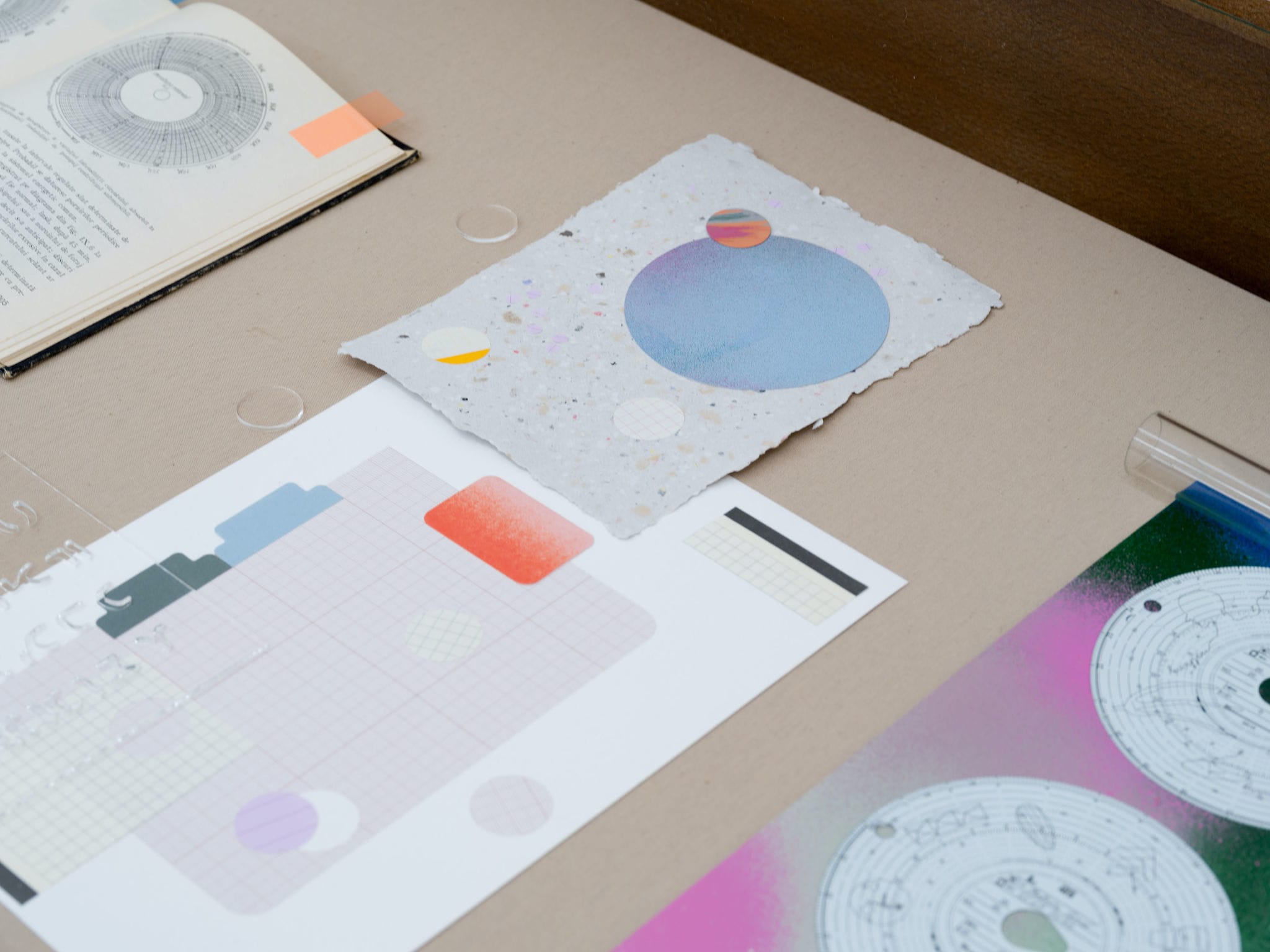
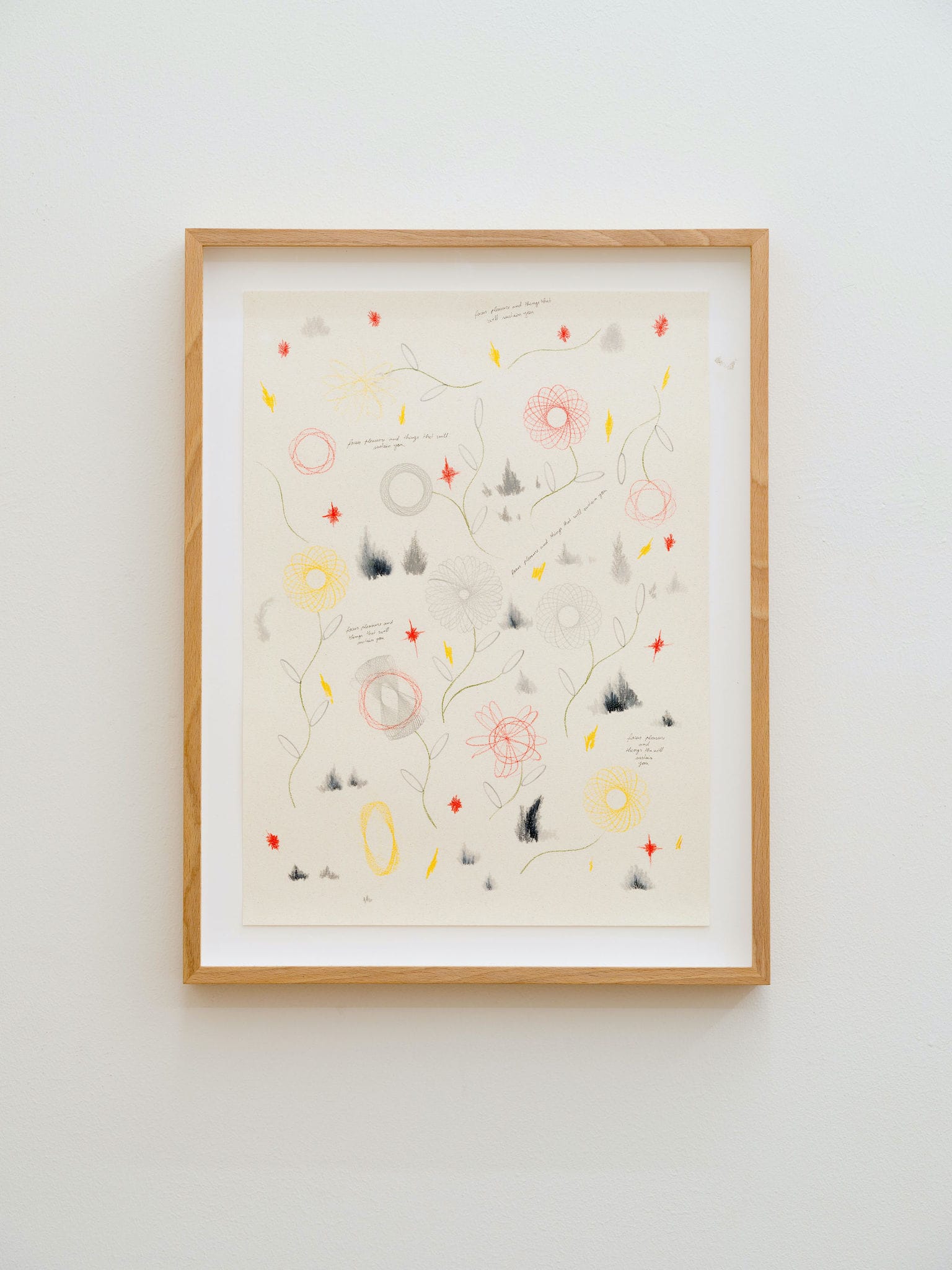
Notes S22S001, 2022
Drawing on Canson Sand Grain paper, 160 g
29.7 x 40.5 cm
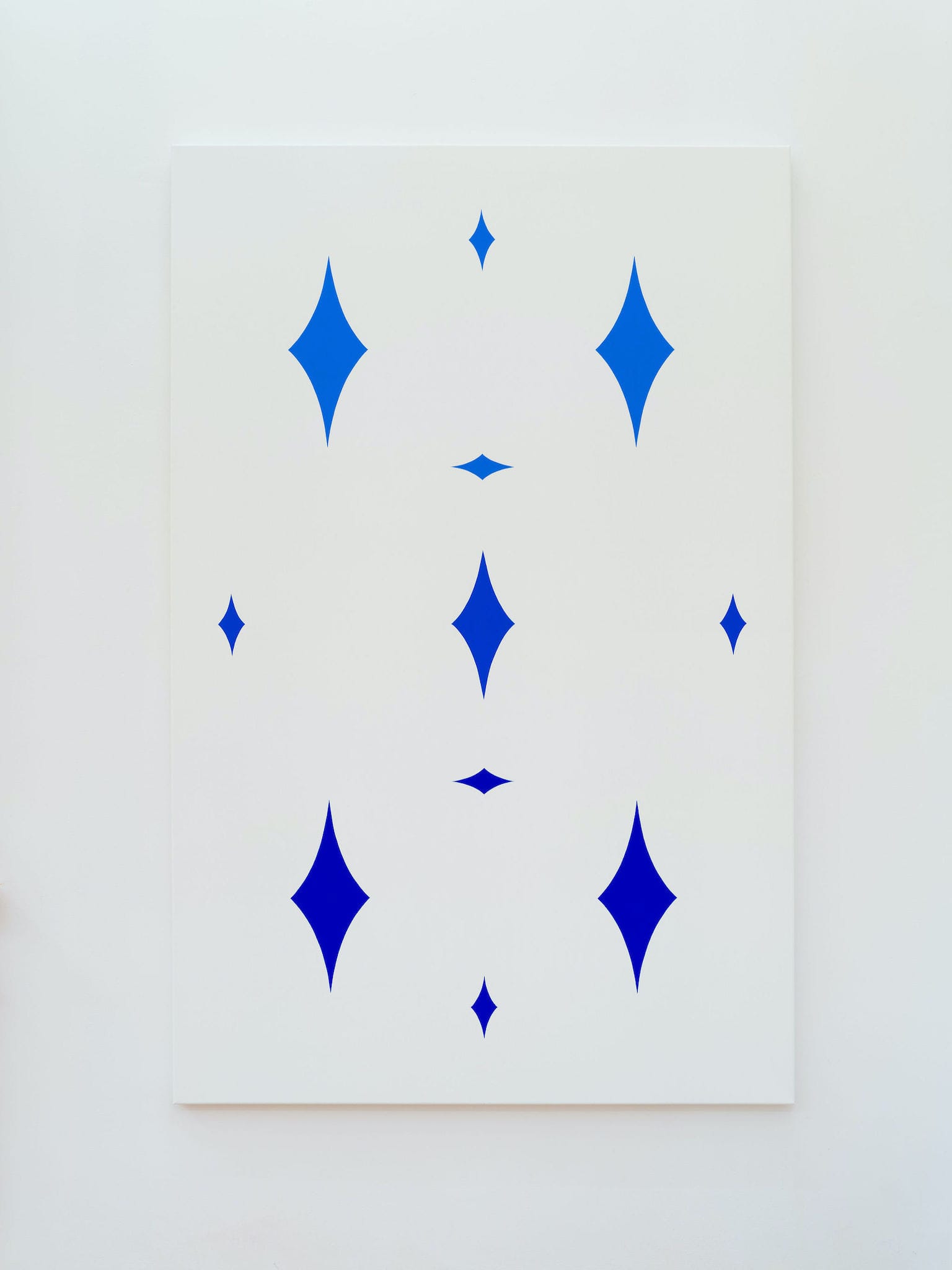
Moment Of Joy (That Almost Slipped My Mind), 2024
Acrylic on canvas
110 x 170 cm
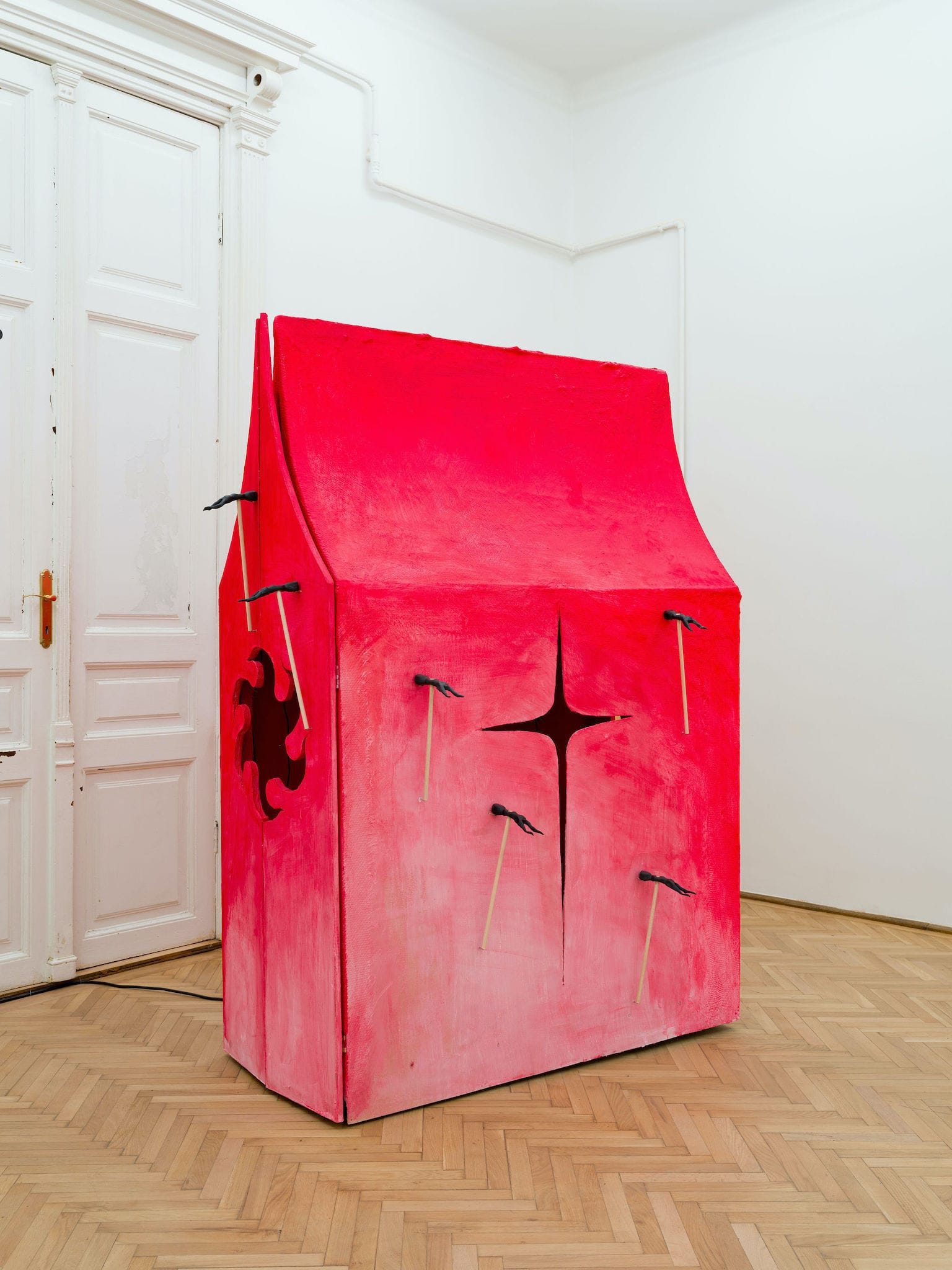
House of a Misunderstood Luddite, 2024
Wood, acrylic resin, solenoids, computer
188 x 125 x 60 cm
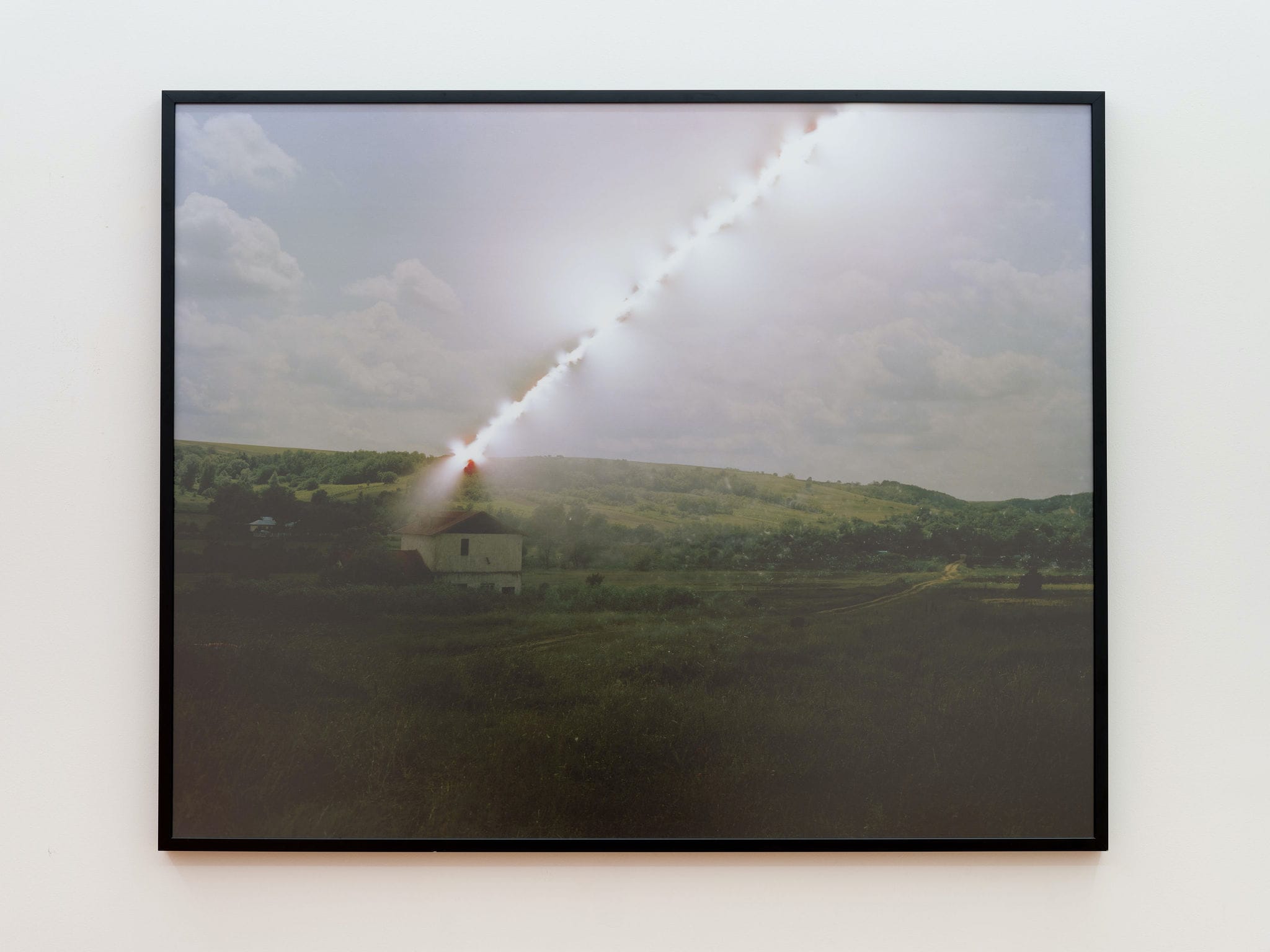
Meteorite impact study, Sopot, Dolj, 2018
archival inkjet print on Hahnemuhle baryta paper, mounted on
dibond
ed 2 of 5 + 1AP
150x120cm
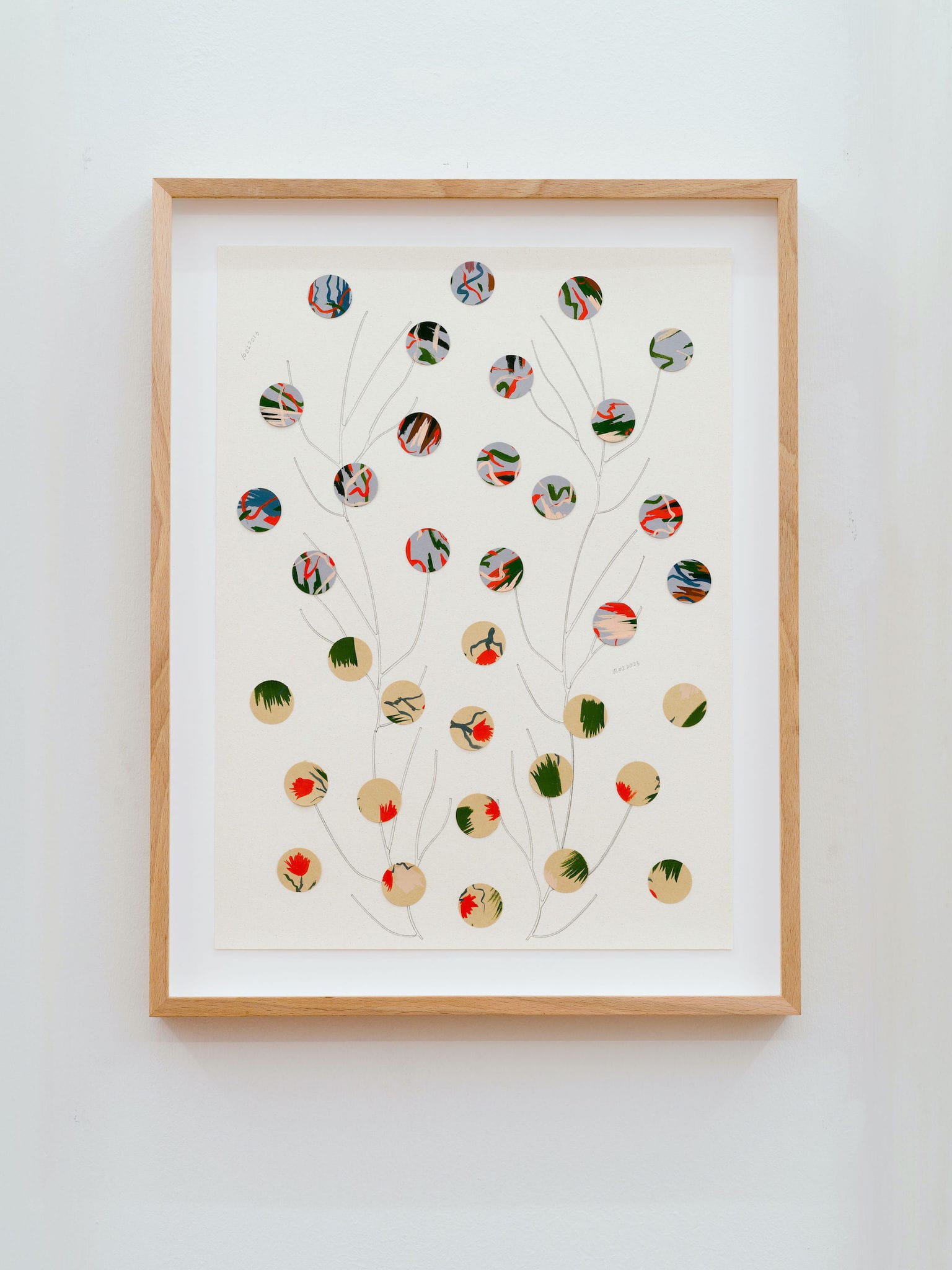
Notes S23S001, 2023
Drawing, gouache, collage on Canson Sand Grain paper, 160 g
29.7 x 40.5 cm
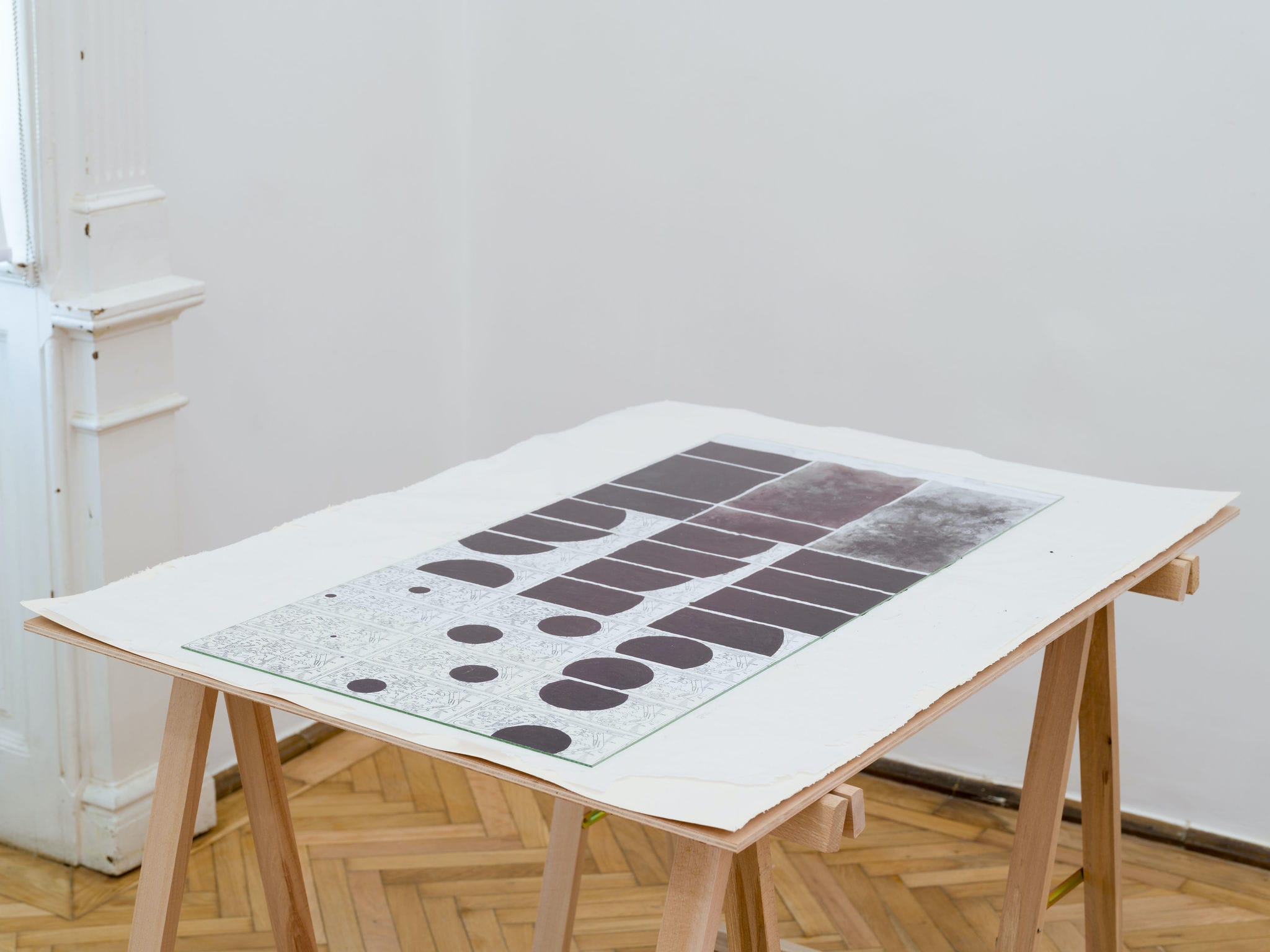
If you take speed out of the equation, big will defeat small, but
cart collisions aren’t quite as simple as that, 2024
Mixed media: transfer, ink, toner, oxide, graphite
87 cm x 40.5 cm
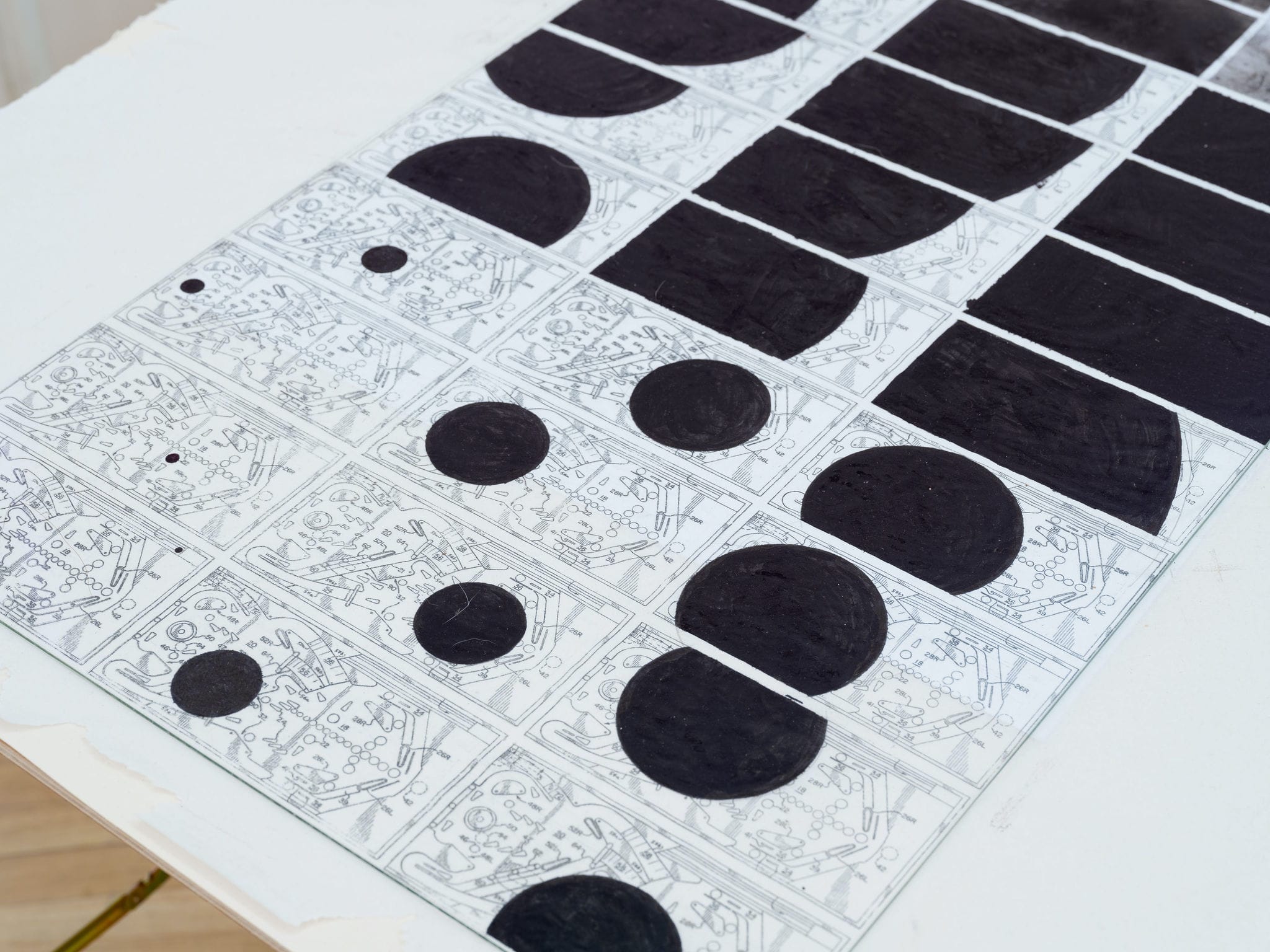
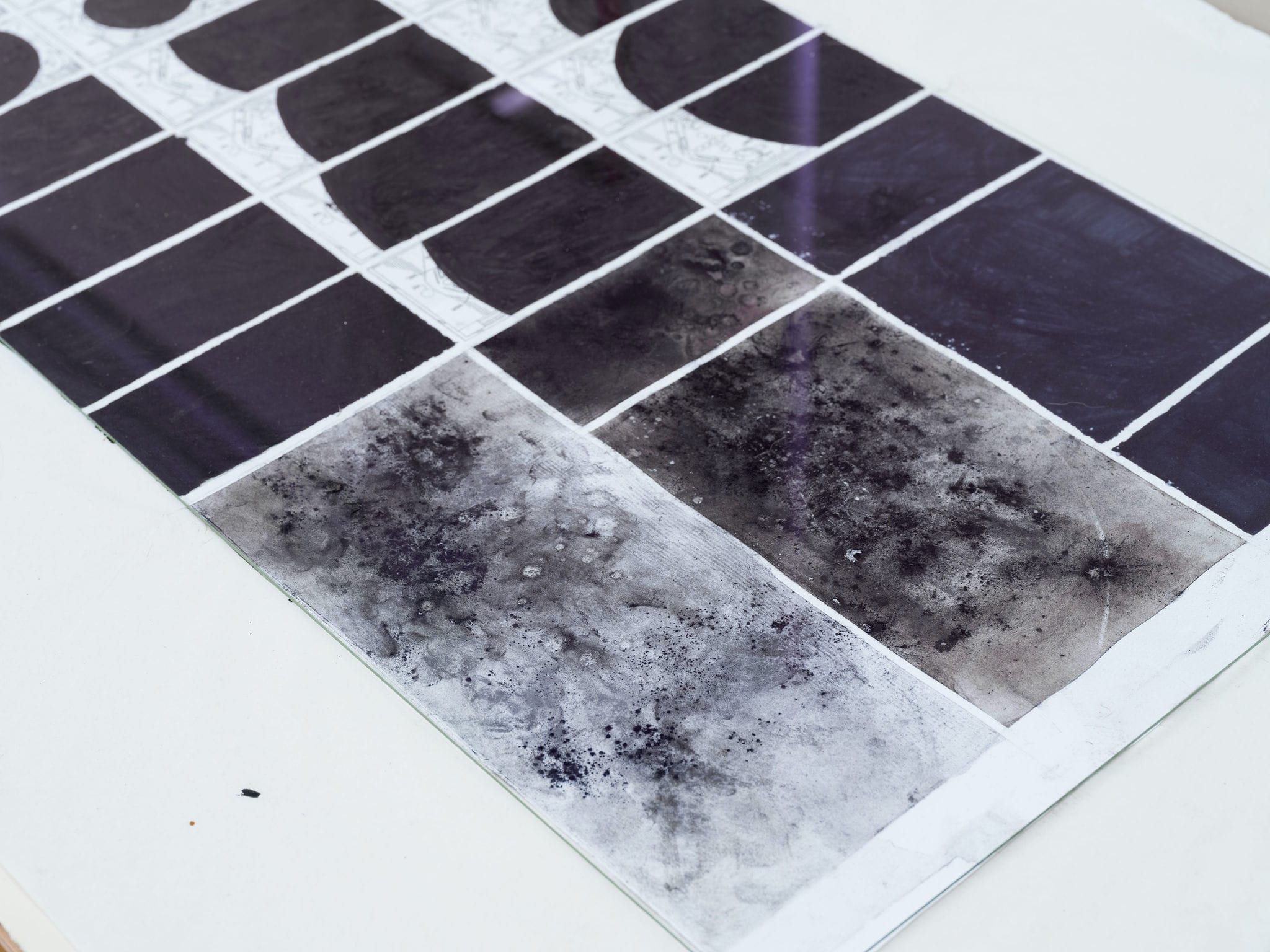
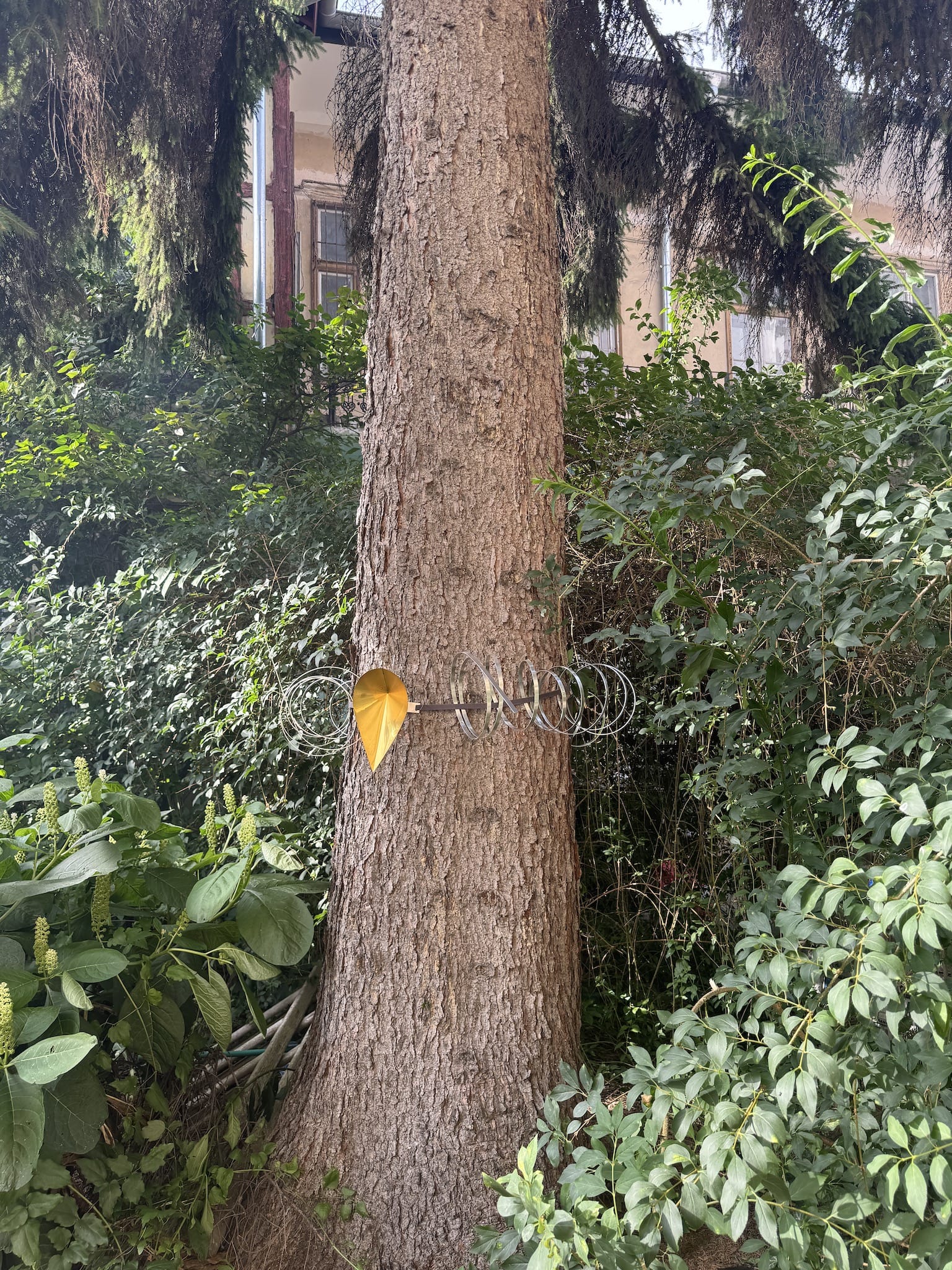
Arboreal Receptors, 2021
Sound sculpture/objects on trees and electronics
Artist Bio
Răzvan Anton (b. 1980, Cluj) studied at the University of Art and Design Cluj (BA Printmaking) and Camberwell College of Arts London (MA Drawing). He has been teaching at the University of Art and Design Cluj since 2010 and he was part of the Paintbrush Factory artist collective. He has been involved in the digital archiving of the Minerva Press Image Archive from Cluj. And he was an artist in residence at the House by the Synagogue Mediaș in the project Absence as Heritage within TRACES between 2016-2018. In November 2018 he was a tranzit / erste artist in residence at the MuseumsQuartier Vienna. In 2023 he coordinated the digital archiving of the Deák Ferenc photographic collection.
Dan Beudean (b. 1980) lives and works in Cluj-Napoca and is considered one of the best artists dedicated to drawing of his generation. With subjects ranging between the natural, the mystical, the everyday, and the fictional, his interest draws towards the historical dimension of the 21st century and its socio-political issues. Previous exhibitions include: God Luck and Good Speed, Cluj-Napoca Art Museum; Magellan’s Cabin, Lateral Art Space, What We Do Is Secret, Zorzini Gallery. Beudean has been awarded the 2013 Strabag International Art Award, and his works have been featured in Vitamin D2 – New Perspectives in Drawing, book published by Phaidon.
Lucian Bran‘s interdisciplinary approach to landscape photography uses cynicism and sentimentality to subvert the ideological constructions shaping how we see our place within the societal world. His trademarks are self-reflexive photographic series which focus on the medium’s contribution to the material culture of global and local geographical imagination. Lucian Bran (b. 1981) graduated The National University of Arts – photography class, Bucharest. His work was shown at Museum of Recent Art, Bucharest (2023), aqb Project Space, Budapest (2024), National Museum of Contemporary Art, Bucharest (2023, 2018), Iomo Gallery, Bucharest (2022), ElectroPutere Gallery, Craiova (2021), Borderline Artspace, Iasi (2021, 2018), Fotogalerie Wien (2018), Salonul de Proiecte Bucharest (2016), Galeria Posibilă, Bucharest (2015, 2013), Museum of Municipal Engineering – Krakow Photomonth – Show OFF (2014). He was selected at Plat(t)form – Fotomuseum Winterthur (2019) and nominated for The Unseen ING Talent Award (2016).
Lorena Cocioni (b. 1995) lives and works in Bucharest. In her practice, she often uses the body senses and the ritual component of everyday actions, such as washing, combing hair, (un)dressing and taking care of the body. From the use of delicate pink hues, feathers, toiletry soaps to glass and metal shapes, she brings together different materials alongside her ceramics. She plays with them creating apparently fragile, yet very consistent works that resemble an almost ancient past, as well as a blurred future.
Roberta Curcă (b. 1991) is a Bucharest-based artist working with drawing, photographic typologies, objects, and artist books. In her work she employs a systematic investigation into various types of structures, objects or the visuality of objects, often displayed as archives, technical drawings, notes, swatches, or other forms used to organize and display information. She often explores the dynamic between the rational and the arbitrary, two- and three-dimensional states, intent and impact, the human and the non-human. She has a BA and an MA in Drawing from the National University of Arts in Bucharest and has done research in cultural studies at CESI – Center of Excellence in Image Studies. Her work has been shown at Zina Gallery and MATCA art space in Cluj-Napoca, Accademia di Romania in Rome, GAEP Galley, Ivan Gallery and Atelier 35 in Bucharest, Kunsthalle Bega and the 2022 Beta Architecture Biennial in Timișoara.
Adrian Ganea (b. 1989, Târgu Mureș) is an artist and set designer, who studied at the Berlin University of the Arts (UdK Berlin) and the University of Arts Târgu Mureș, and works in Cluj, Romania. His practice ranges from sculptures and 3D animations to extensive work in scenography for theatre and performance projects. Adrian Ganea’s practice varies from theater scenography to sculpture, digital simulations and 3D animations. He is particularly interested in forms of fiction that can materialize through the subjectivity of technologies. His works are often described as liminal spaces, where the boundary between the intangible and the material becomes ambiguous. His recent sculptural installations and wood reliefs modelled from digital assets, act as haunting fragments of a virtual forest architecture. Taking a cue from the high-end graphics industry use of 3D scanned nature to fabricate fictional wilderness in films or video games, Ganea’s sculptural works draw from such models to cast embodied views of the natural environment. These works critically reflect on romantical aspirations in virtual landscape design and on politics of the fantasy-historical worlds they create, by conjuring up characters that conspire to re-enchant nature and our relationship to our environment.
Mihaela Hudrea (b. 1989, Romania) lives and works in Cluj-Napoca. Through her paintings she tries to echo our emotions about the poetics of the universe and what surrounds us. Mihaela Hudrea’s vision is that humanity has the tendency of being quite poetical both about what we know and what we are yet to discover. Mihaela Hudrea distills her fascinations and what she learns about the world into an abstract visual language that she develops intuitively and playfully. Through a striking sense of color and crisp lines, she creates spatial tension and movement across the canvas. Thus, her works gain a meditative quality that challenges the hurried ways of seeing. Mihaela Hudrea has shown her works in exhibitions at Conector, Cluj-Napoca (2023); Deiglan Gallery, Akureyri (2022); Art Encounters Biennial, Timișoara (2021); Ivan Gallery, Bucharest (2021); Projektraum 145, Berlin (2021).
Ioana Vreme Moser (b. 1994) is a Romanian sound artist engaged with hardware electronics, speculative research, and tactile experimentation. In her practice, she uses rough electronic processes to obtain different materialities of sound. She places electronic components and control voltages in different situations of interaction with her body, organic materials, lost and found items, and environmental stimuli. From these collisions, synthesized sounds emerge to carry personal narrations and observations on the history of electronics, their production chains, wastelands, and entanglements in the natural world. Amongst others, she has performed and exhibited at the National Gallery of Denmark (DK), Fonderie Darling (CA), Akademie der Künste Berlin (DE); Manifesta 14 (XK); SFX – Sound Effects Seoul (KR), Ars Electronica (AT), Bunkier Sztuki Gallery Krakow (PL); Simultan Festival (RO); Eigen+Art Lab – Transmediale, Berlin (DE).
Mihai Plătică (b. 1983) was a professional athlete (long jump) before graduating with a photography degree in Cluj, which offered him a quite organized and rational experience. It also probably helped him to define his working technique later on. Plătică has always been interested in the history of the body, the nature of materiality and the universal laws of physics. The artist likes conceiving objects/sculptures and photographs using scientific theories that allow for a different positioning. His approach is methodical, scientific, rational, but he attempts to open new perspectives on the world. In his exhibitions he wishes to convey an entire mood and not just the object, but its context as well.
